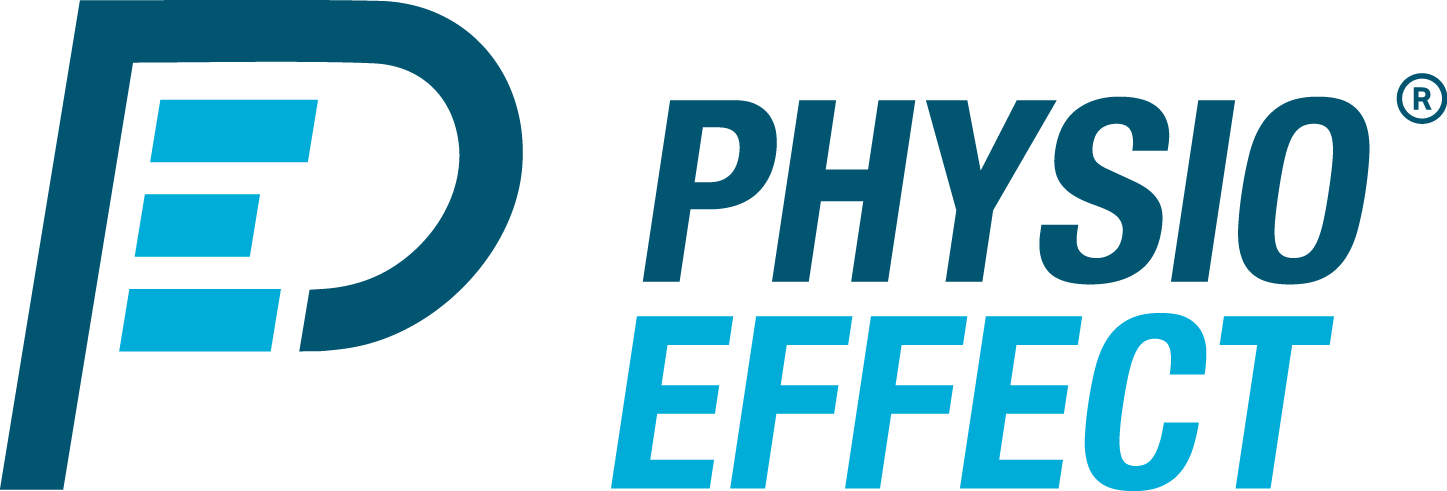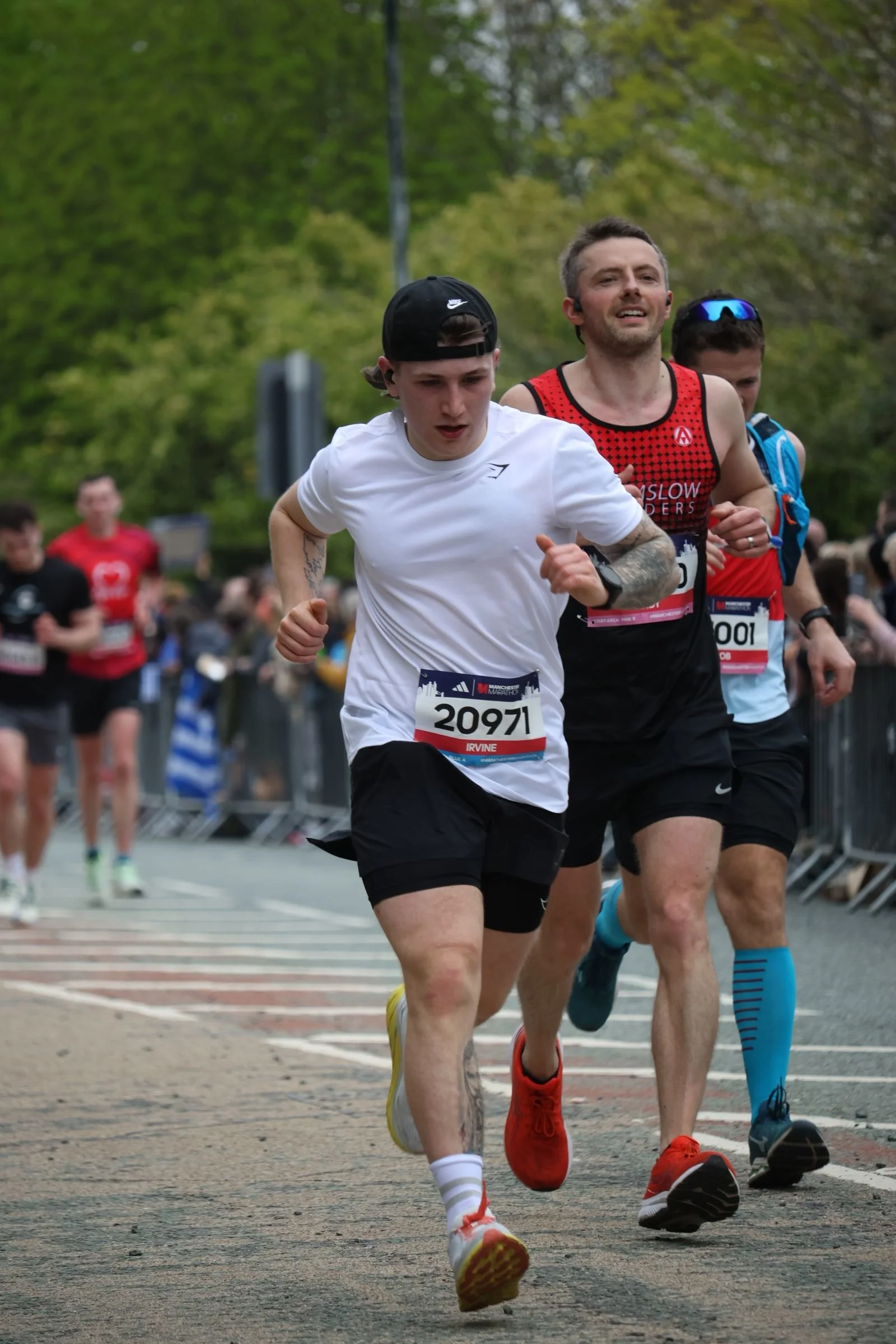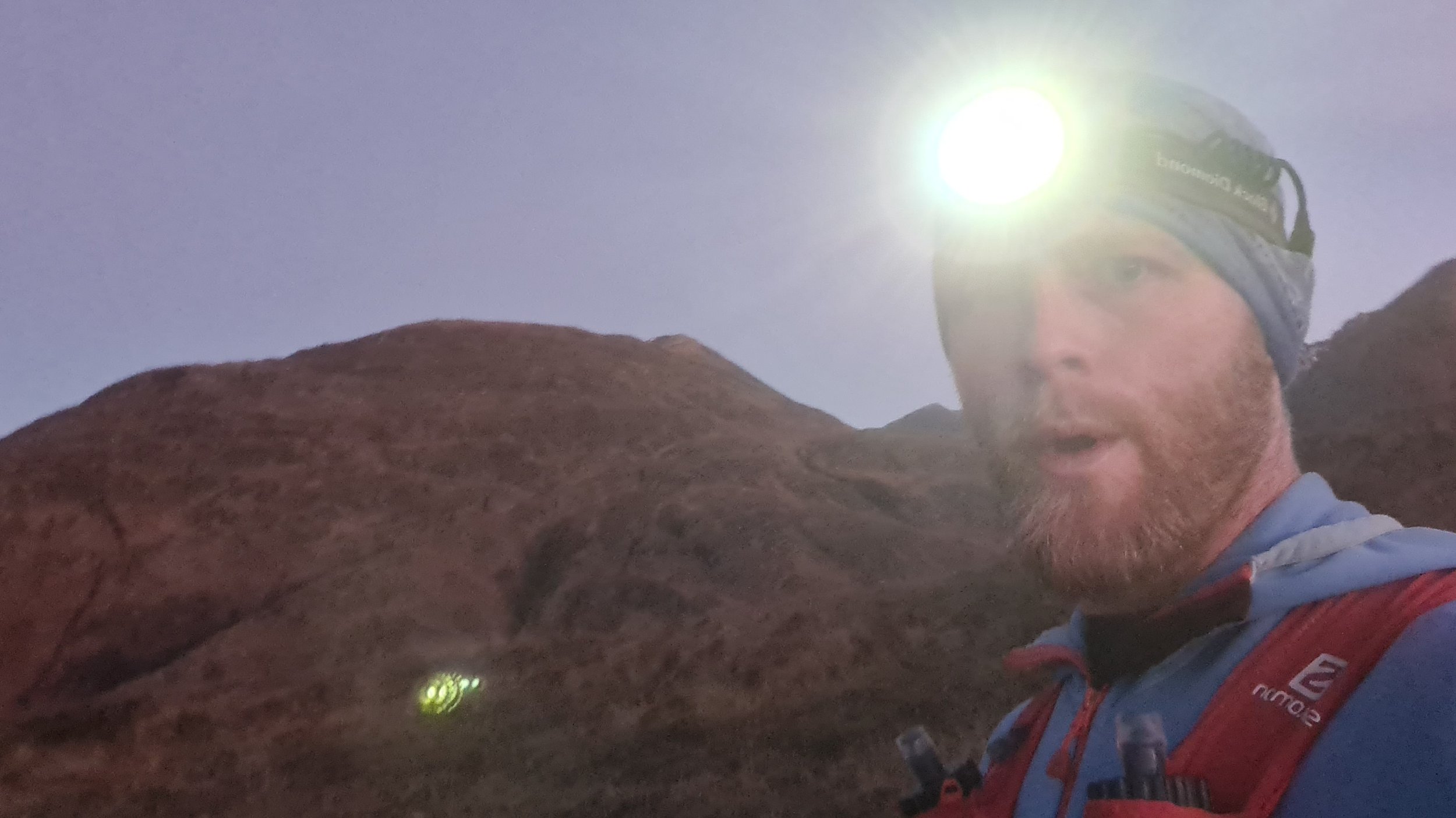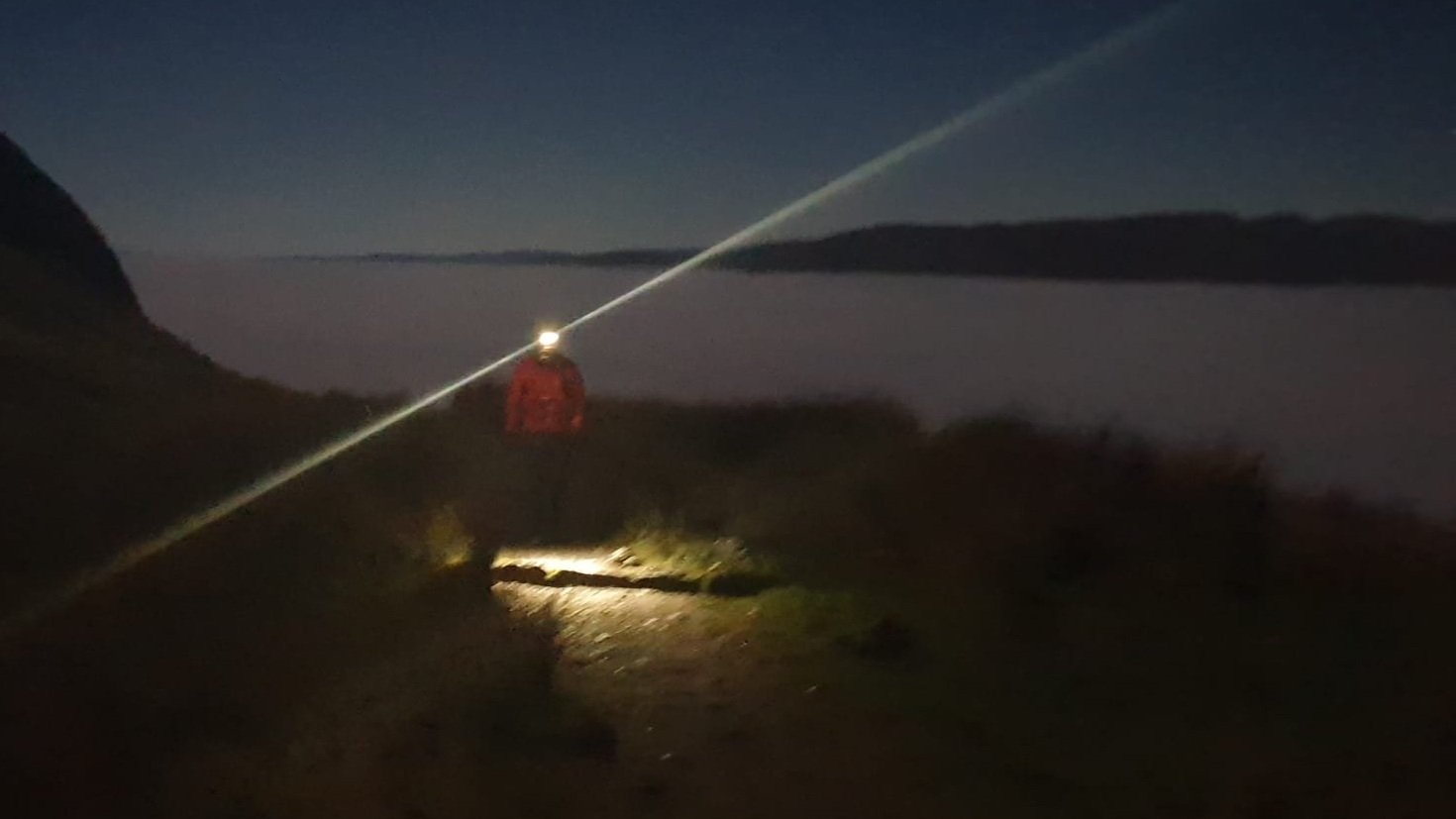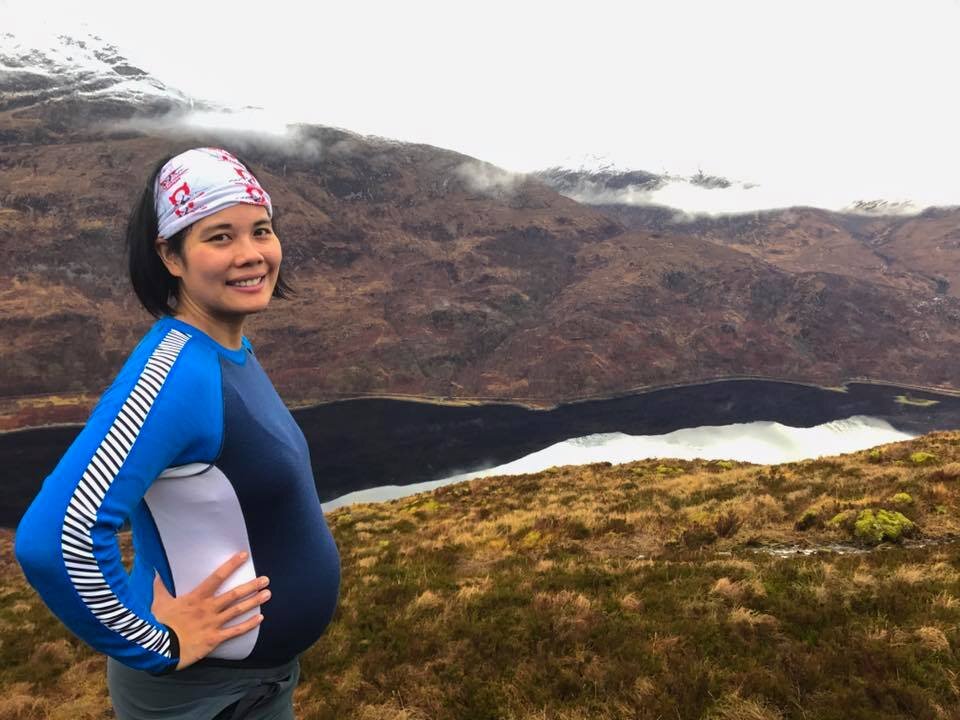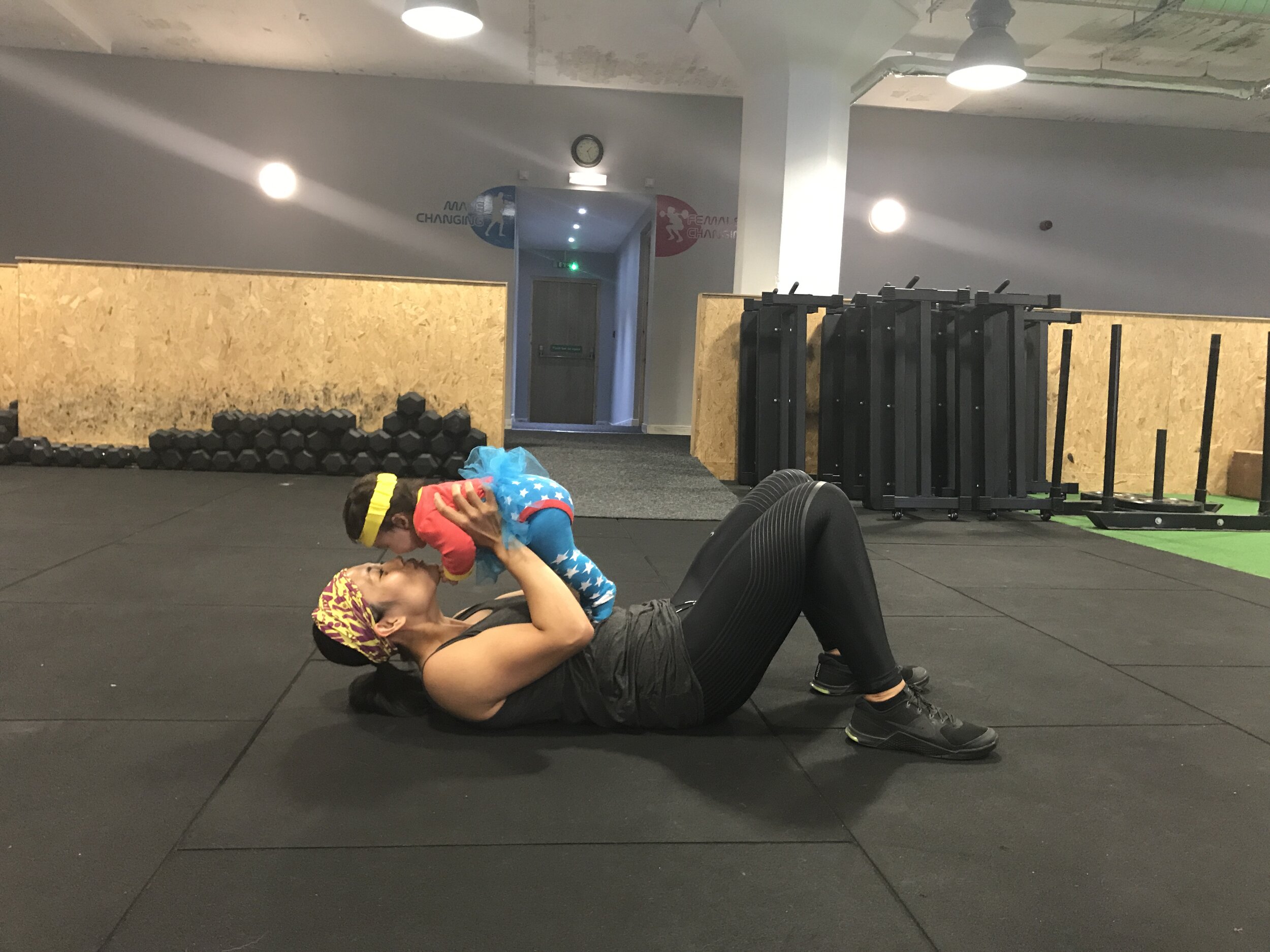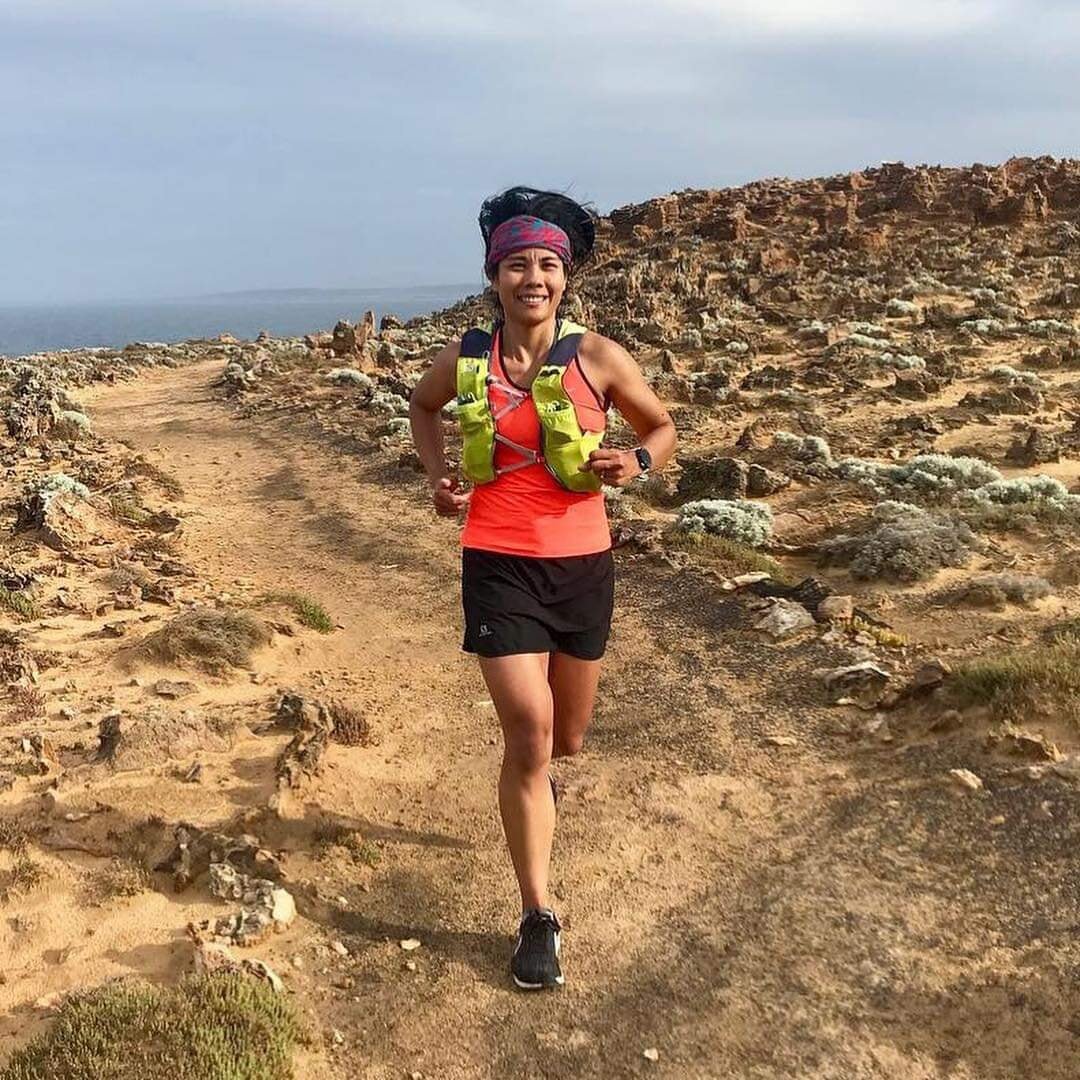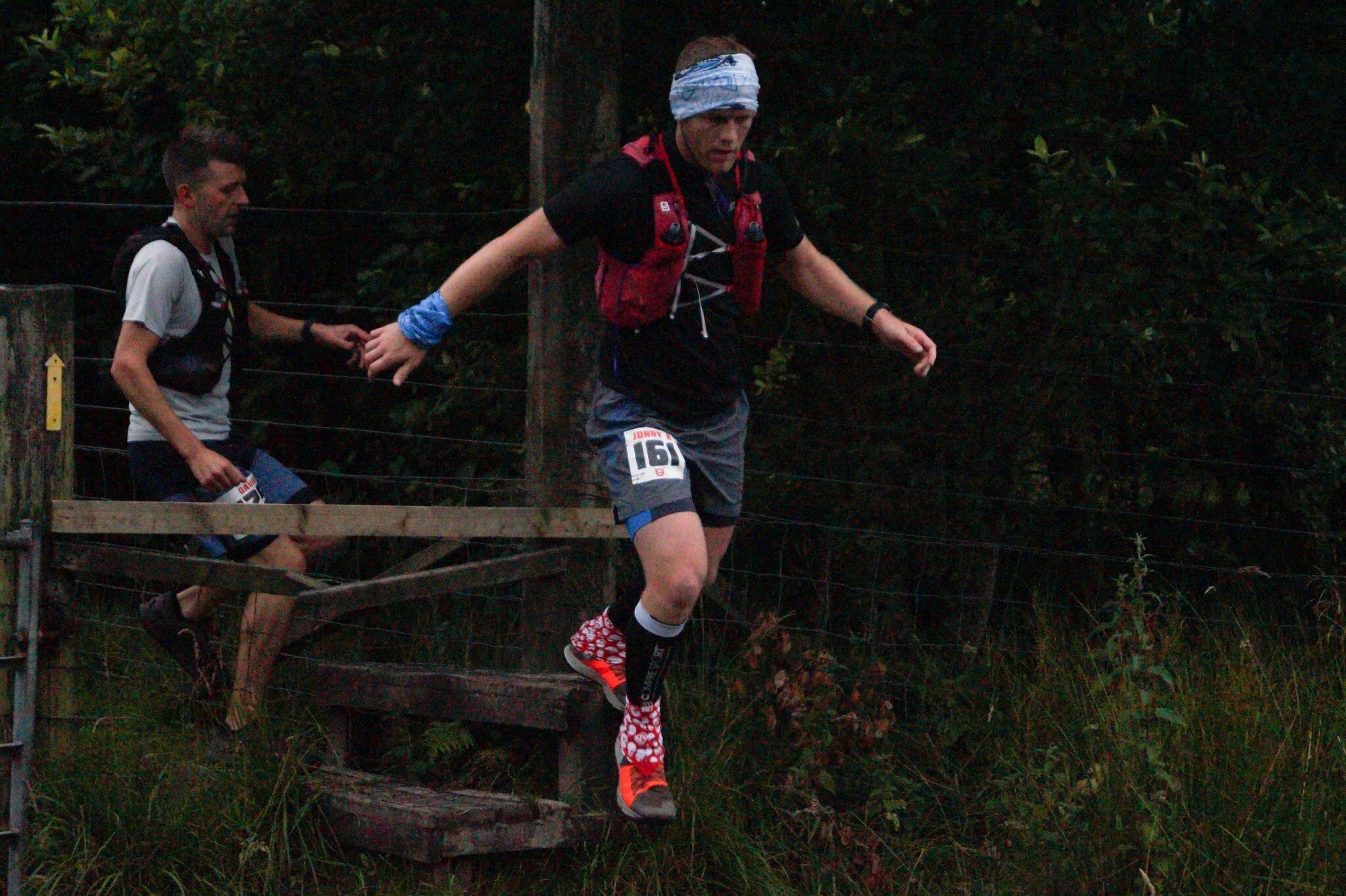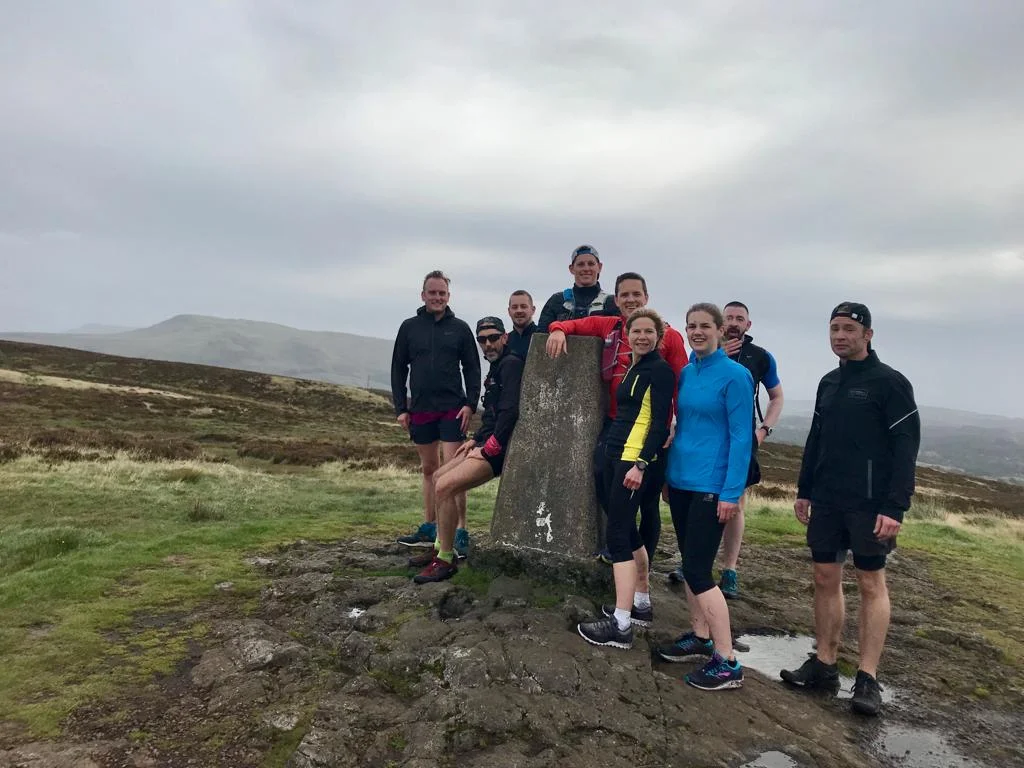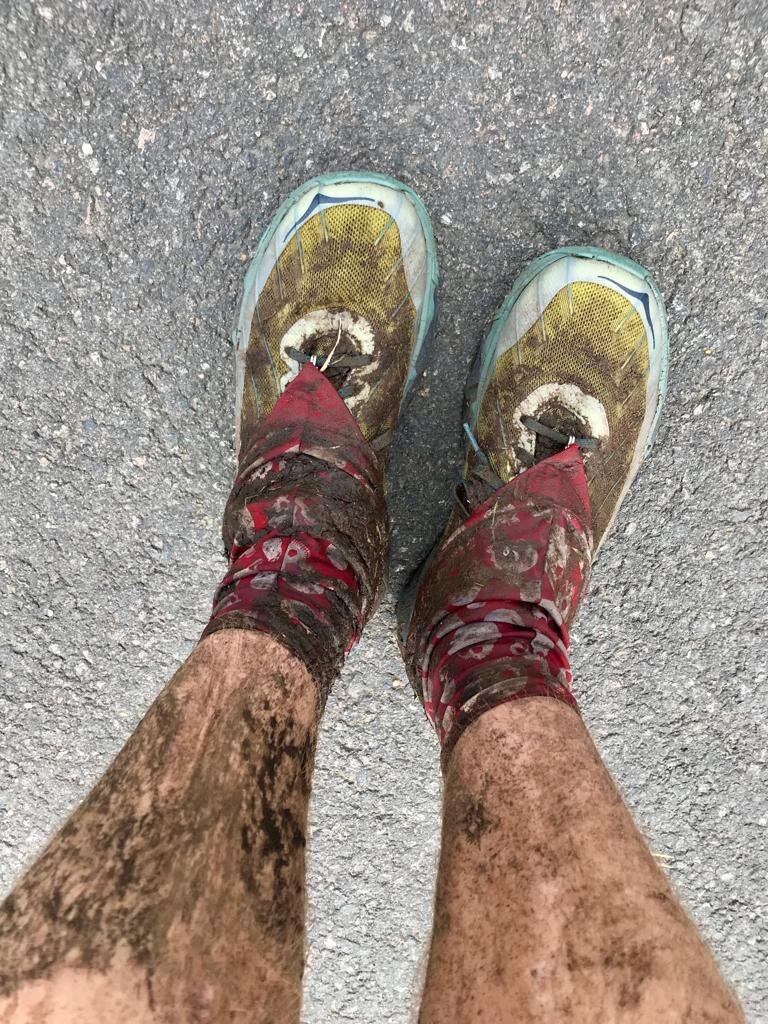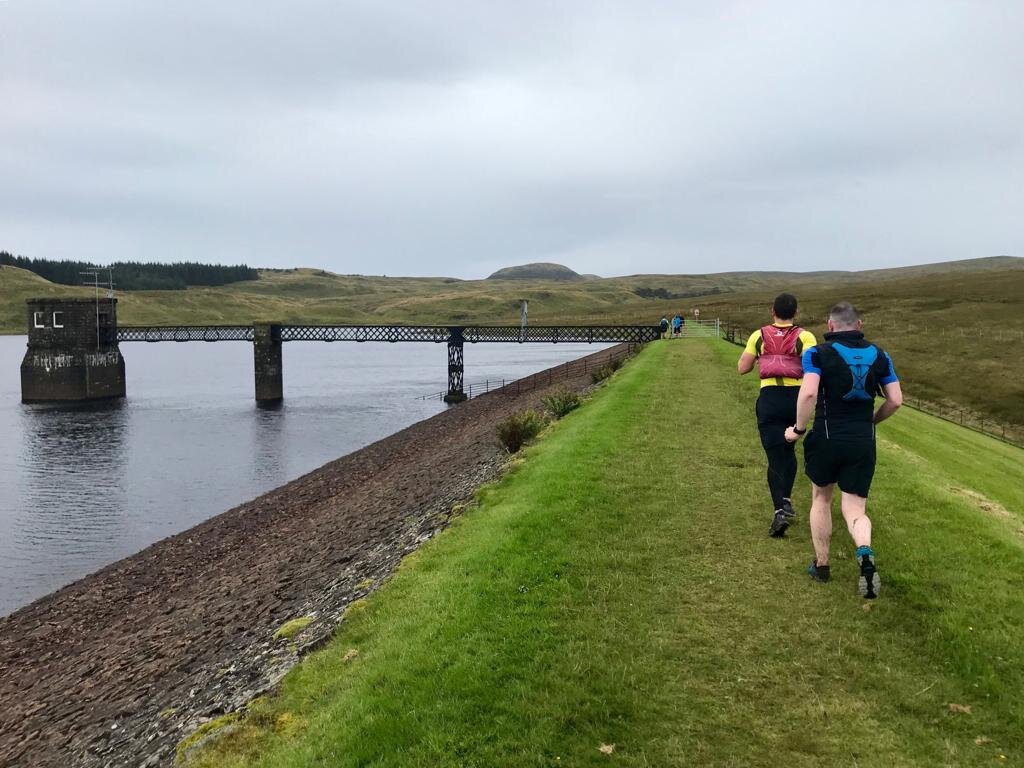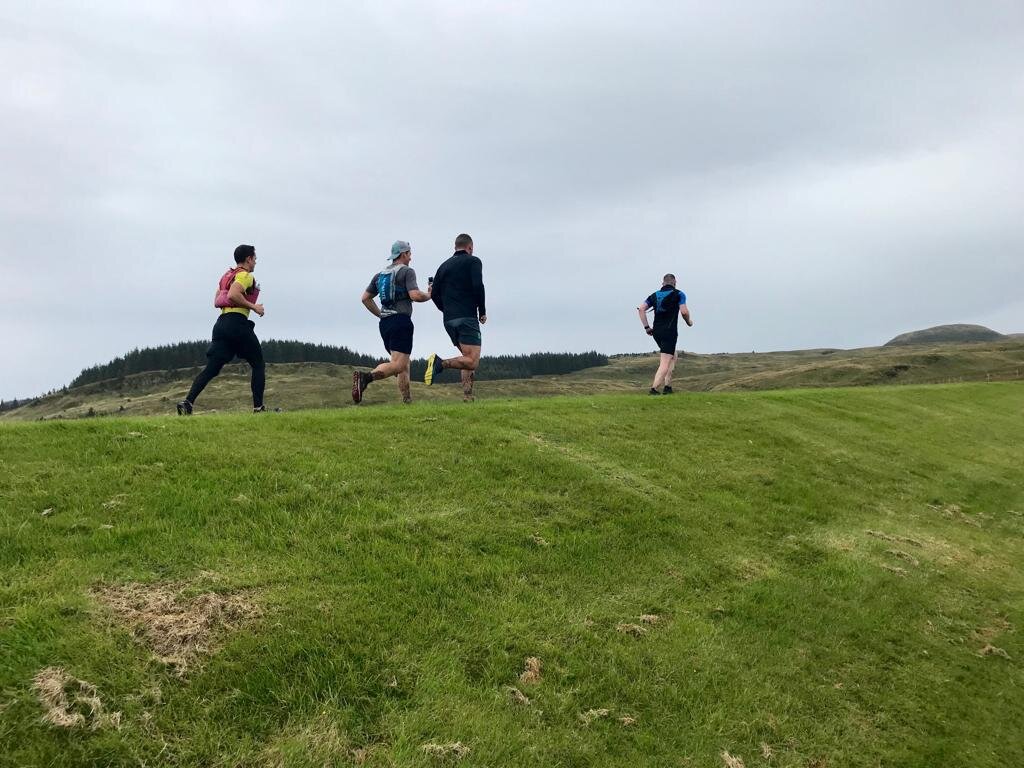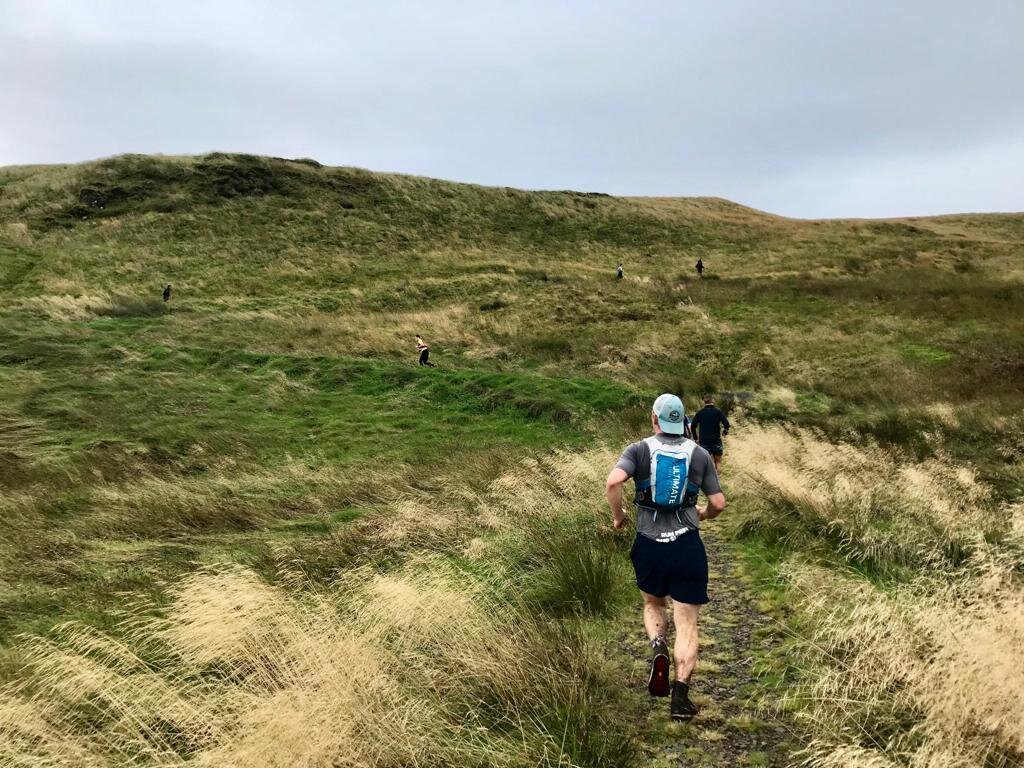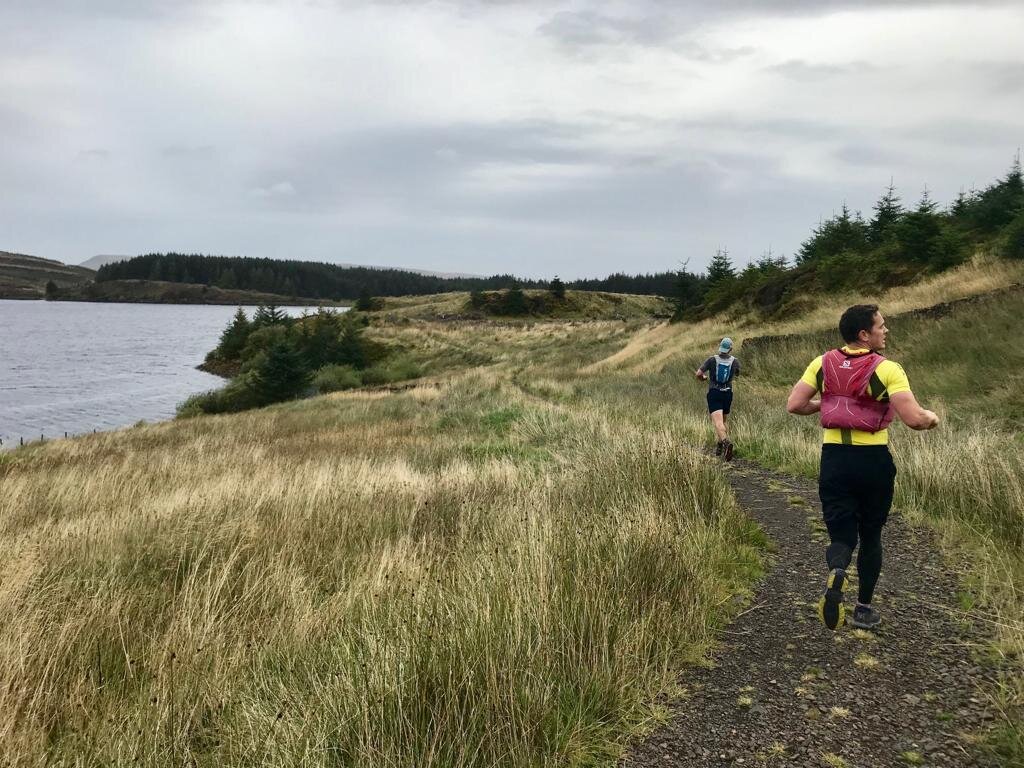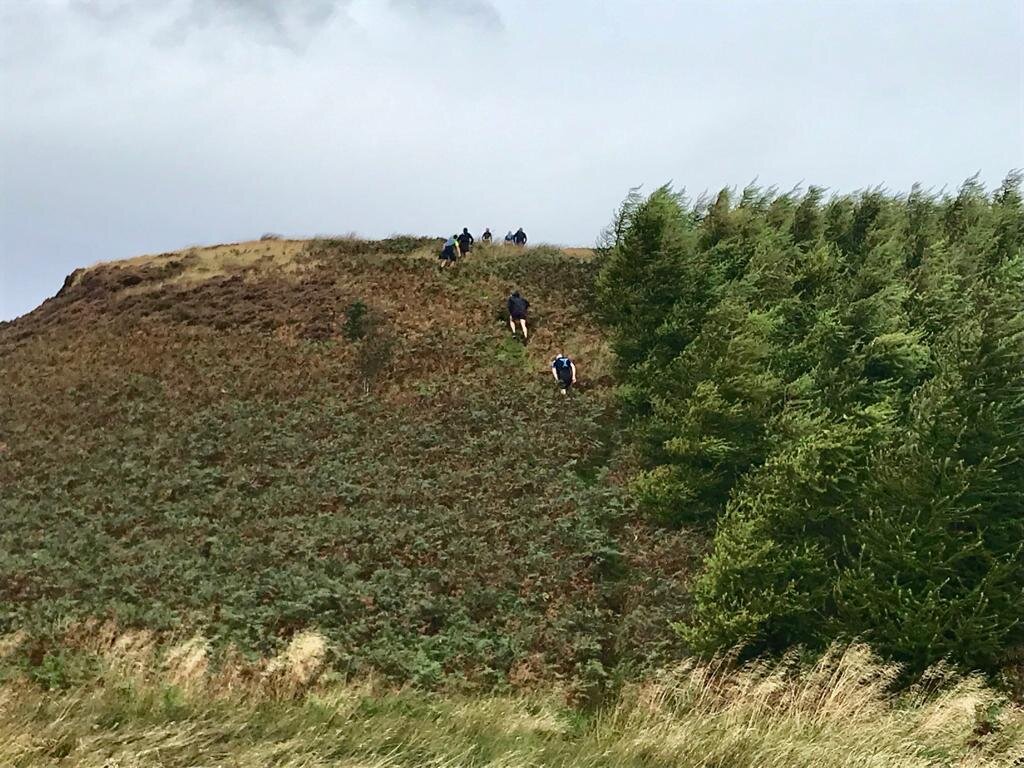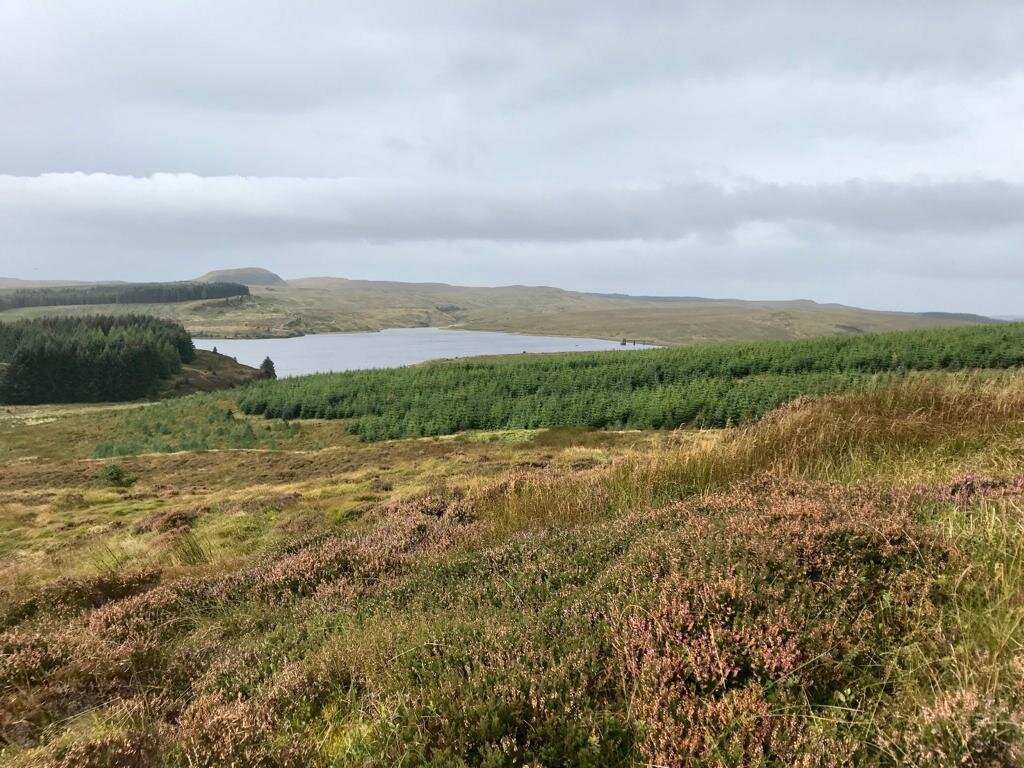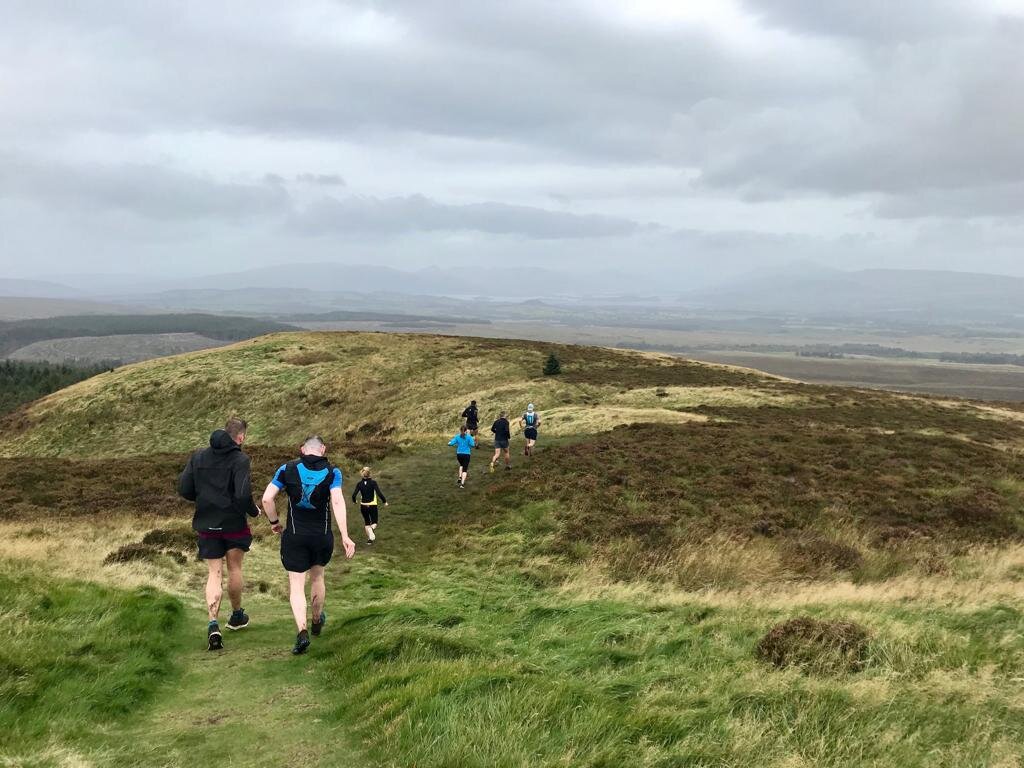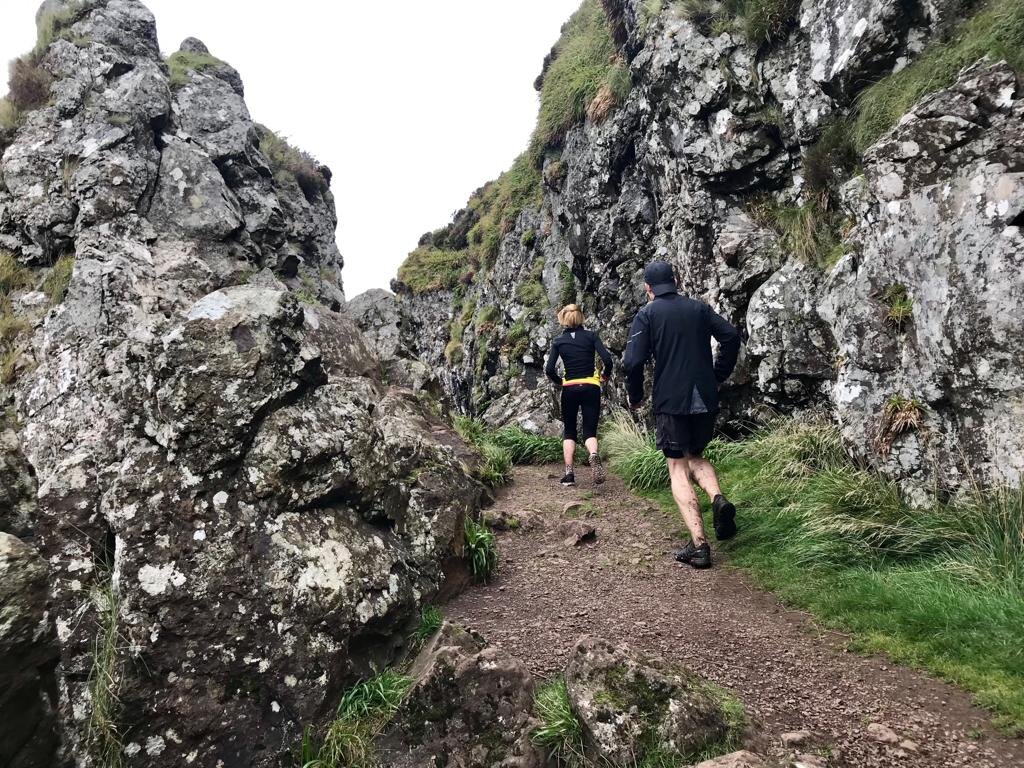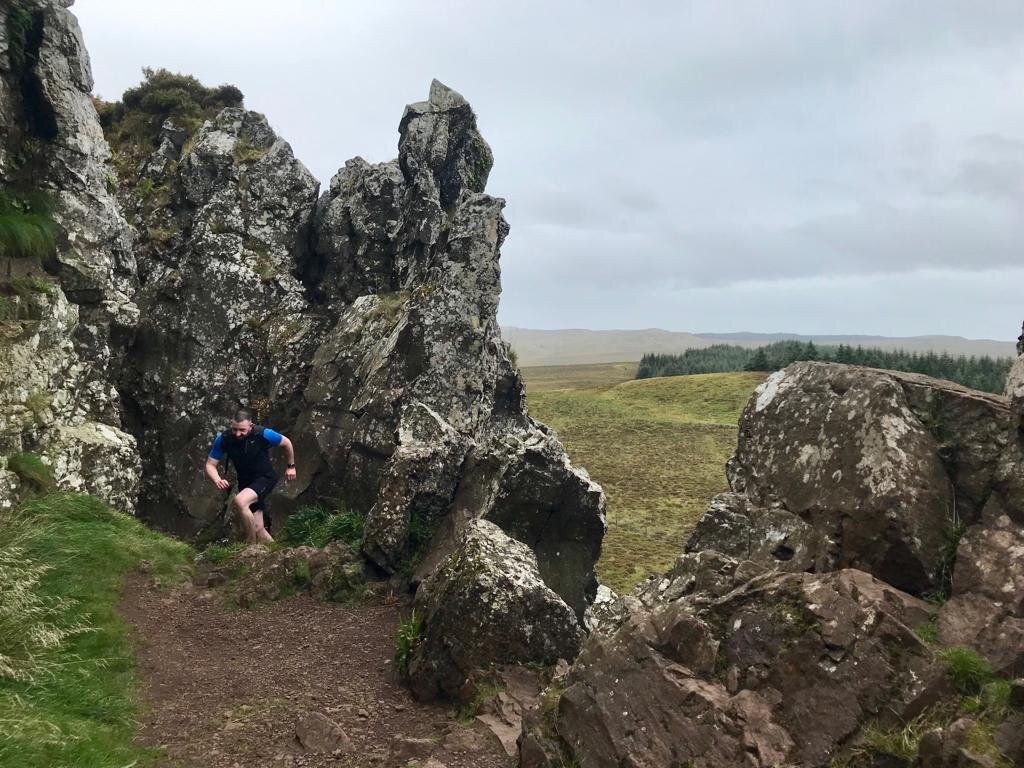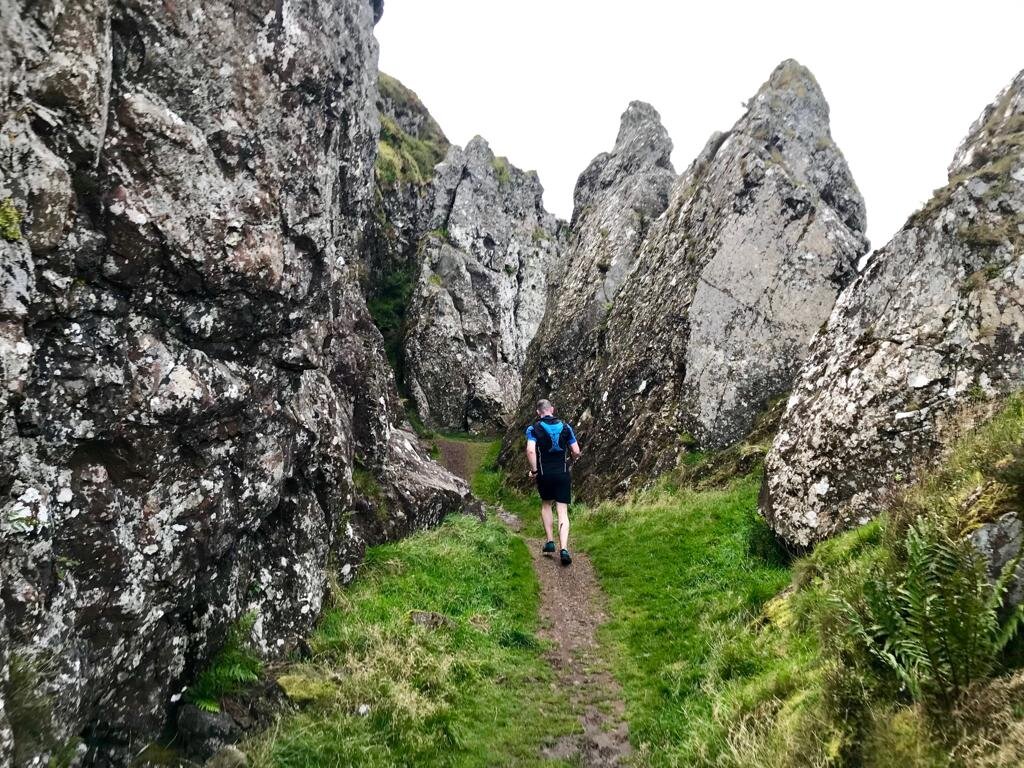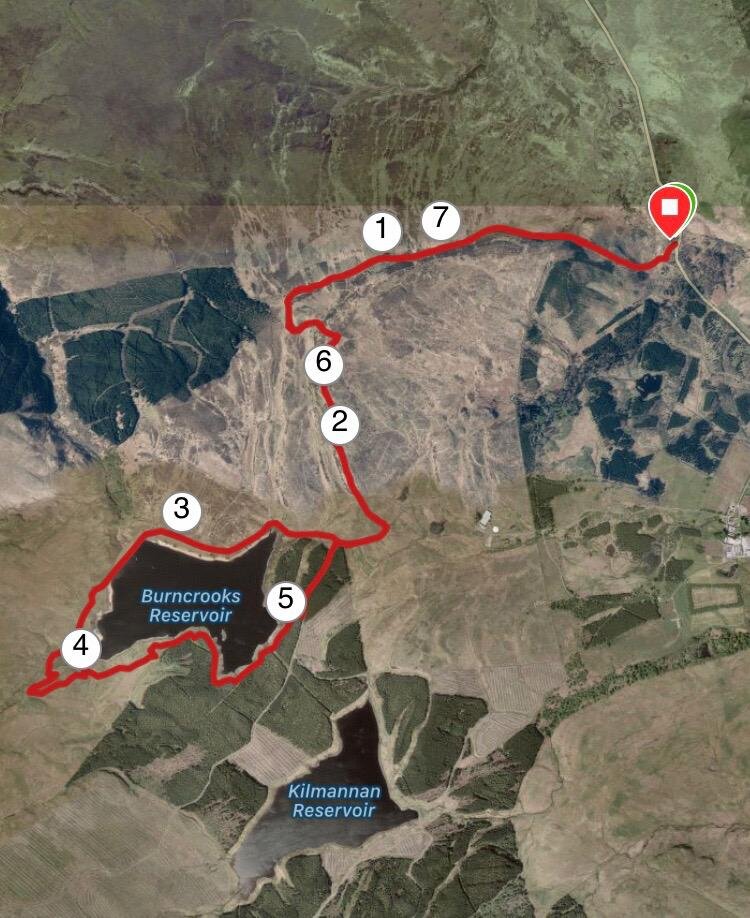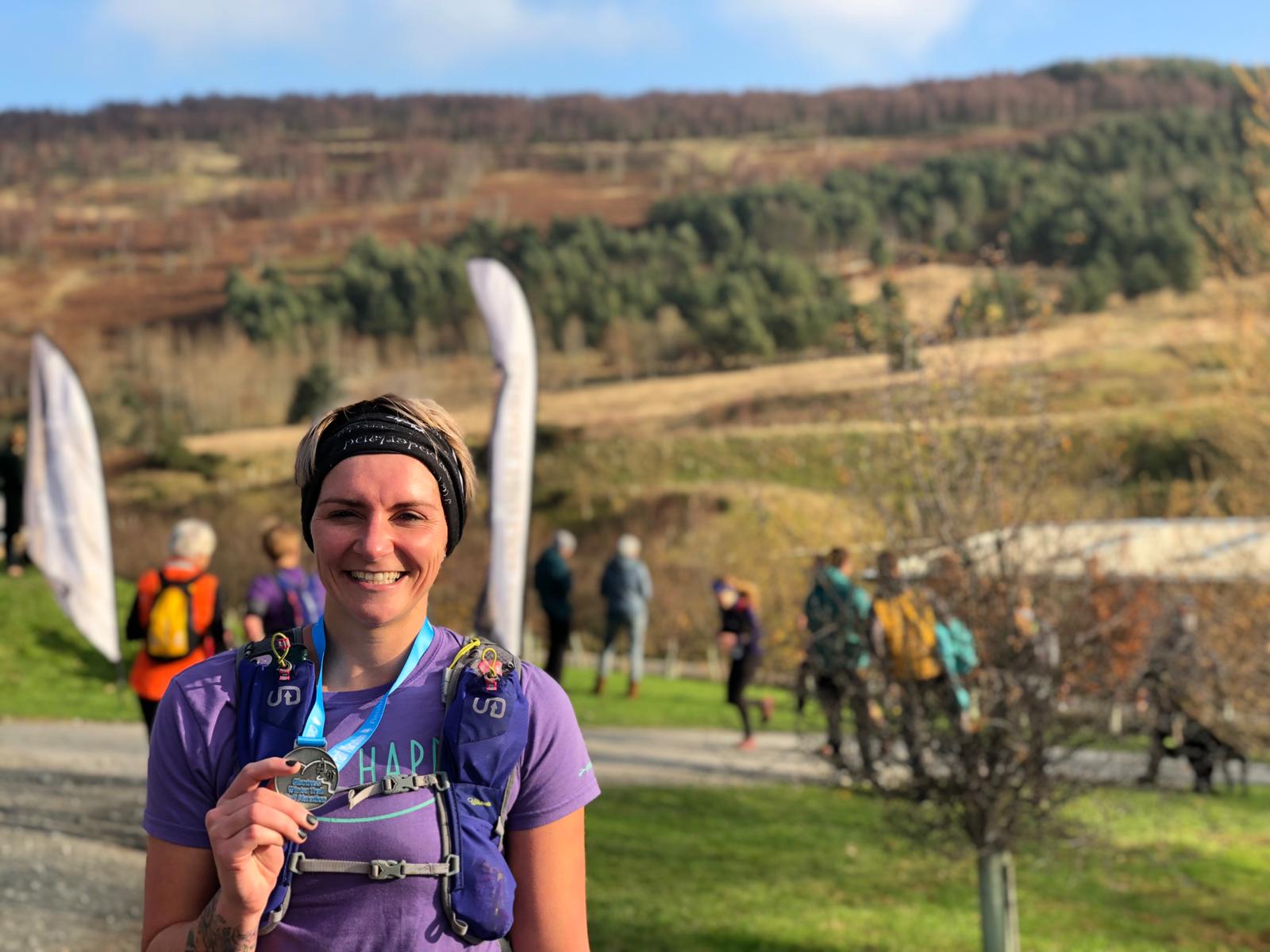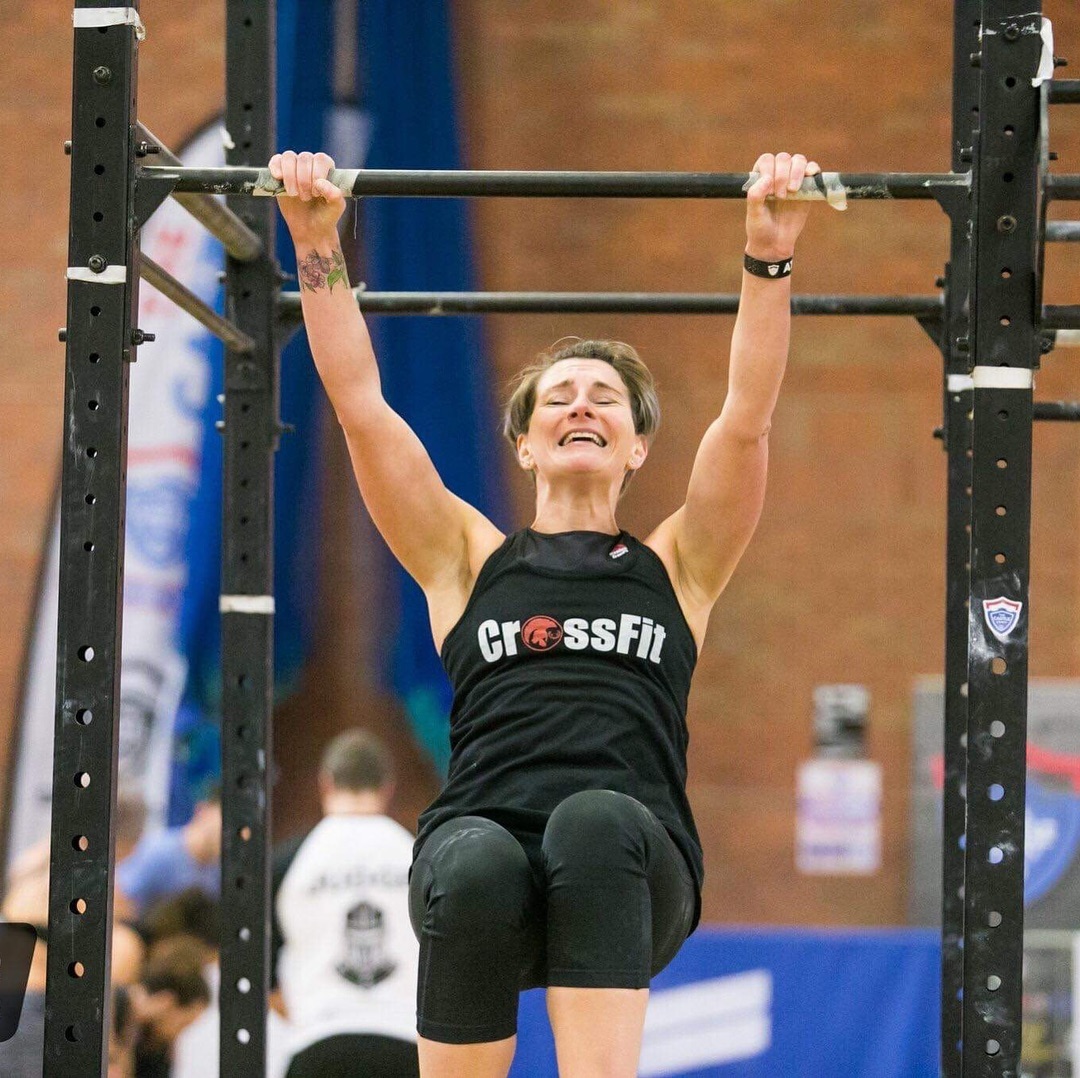STRONGER ANKLES: Simple exercise drills with no fuss!
Trail and hill running as a sport is demanding on our bodies. Common injuries are often as a result of overloading an area of the body not able to meet the demands placed on it, particularly as running is a repetitive, high-impact activity. Here are four minimal equipment/no fuss drills to help improve strength, proprioception and build fatigue resistance to improve your running economy.
Written by Mariam Kilpatrick, Physiotherapist, Trail and ultra Runner
Trail and hill running as a sport is demanding on our bodies. Common injuries are often as a result of overloading an area of the body not able to meet the demands placed on it, particularly as running is a repetitive, high-impact activity. Click on the video below for 4 minimal equipment/no fuss drills to help improve strength, proprioception and build fatigue resistance to improve your running economy.
The Glasgow Running Clinic is part of Physio Effect and we are located in the North of Glasgow. If you would like more information about the Running Clinic and the services we provide, please click on the button below:
My Marathon Experience
Read how Lewis planned, trained and ran his first marathon. Helpful insights and tips with some guidance from our resident Running Physio expert Jonny Kilpatrick
Marathon Prep 2023
For those that know me, know I’m passionate about training, especially Olympic weightlifting, CrossFit and getting stronger. Around September of 2022 I realised my training was getting a bit stagnant and progress was slowing right down so I decided I wanted to try something new alongside weightlifting. This was wrestling at the Griphouse with Cammy Nicol. I’d been loving this; however, I had picked up several upper body niggles, not serious injuries but some irritation as my body is demanded to be in positions it has never been in before.
This led to December of 2022 in which I was still balancing weightlifting and wrestling but decided to take a break from my Olympic lifting and do something different that I wasn’t totally comfortable with. This resulted in signing up for a marathon which really felt completely out of my comfort zone. I don’t think those close to me could believe I was even thinking of it, but on the 19th of December I dropped the hammer and decided the Manchester Marathon in April would be my purgatory. This would give me just over 16 weeks’ worth of training.
When I sent Jonny, one of the owners of Physio Effect who is a regular runner and running coach himself my entry email, he knew I was serious about completing this so took it upon himself to plan my programming for the next 4 months. This began with a 10k time trial on Christmas Day, cruelty at its finest and no doubt some sort of sick challenge from Jonny for me to prove my commitment!
THE AEROBIC BUILDING
As mentioned previously, my training began on Christmas Day with a 10km time trial in which Jonny could base my paces/heart rate zones for the upcoming training block on. The first few weeks consisted of between 20 and 40k per week to build some running volume into my legs and to build an aerobic base so I don’t “die on my arse in the second half” in the wise words of Jonny.
One thing I love is structured programming and often I can stick to a rigid program if it has been written for me. With the Jonny’s guidance, the plan was to build up an aerobic base over the first couple of months and complete the marathon with a time of between 3:30 and 4:00. Simultaneously I would still be attending the wrestling classes and building strength in the gym with a shift in focus onto unilateral strength (lunges, Bulgarian split squats), deadlifts and overhead press. This may seem like a lot of training, but I love running early in the morning around 6/7am before my day starts so this frees up the majority of the afternoon to work or if I have extra time, potentially do some double training days. Since running was the focus, this would be prioritised and over the coming months I would slowly decrease my volume in the gym. Around one month out from the marathon I would completely take out wrestling training to reduce the likelihood of an inconvenient injury occurring. During this time, I was also due to be on placement for university whilst still working so my biggest concern was potentially not having enough time in the day to fit in my training. Where there’s a will there’s a way though and this is likely why I really thrived training very early in the mornings.
Training Diary
25/01/23 - We are now 4 weeks into training with my longest distance so far being 15km, one thing I’ve noticed is people saying “I couldn’t do a marathon, I hate running” and I now believe I know why this is the case with many people. I think a lot of people run their easy runs too hard, go balls to the wall, jack their heart rate through the roof and die. Now that I am doing my runs based off heart rate and rate of perceived exertion (RPE) thanks to Jonny, I know that it’s okay to run slower as theoretically, you need to run slow to run fast. It’s all about those Mitochondria.
01/02/2023 - Longest run completed last week. It was meant to be a trail run of 18km but standard Lewis effort, I went the wrong way at Chatelhault and had to double back on myself. I checked my watch to clarify it was another 3km back to the car so thought to myself “screw it, let’s just make it a half”. I was delighted I done this which felt like a good achievement.
04/03/23 – 33.8km trail run on the West Highland Way. Jonny sent me a route to follow on my watch via a gpx file, little did I know there were PLENTY of hills throughout this. Sun was splitting the skies which made this run much more enjoyable! At the 20km mark however was a big stinking hill that I can only describe as never ending! I felt I was on this incline for at least 30 minutes (potentially maybe over exaggerating here). I must have cursed Jonny’s name about 6 times as I slog myself up the hill.
A ‘gradual’ incline just outside Milngavie on the West Highland Way.
Now that we are just over a month out from the race, I have reduced my gym sessions to 2 a week and I have completely taken out wrestling to focus solely on running and maintaining current strength.
18/03/23 – Longest run to date, 37.1k/22 miles. I managed it in just over 3 hours 30 minutes, which equates to 3 podcasts episodes. The Erskine bridge was the turn around point which made things a lot worse as I realised “I AM MILES away from my flat”! I thoroughly enjoyed this run though and I was able to stick with a consistent pace throughout and maintain my Zone 2 Heart Rate/RPE.
03/04/23 – Time to Taper. All the hard work has been done and now I am able to decrease mileage, keep intensity high and fuel properly. Lucky for me, I decided to book a 3 day holiday to Marseille so managed to soak up my final easy miles in a different country.
The lovely sunrise in Marseille.
13/03/23 – The Carb load 😊. 3 days out from the race the goal was to increase carbohydrate intake to around 500-600g each day prior to the race to ensure my glycogen stores are topped up as this is the body’s preferred source of energy thus, I will be properly fuelled going into Sunday.
Race day – Manchester marathon – April 16th 2023
5:30 – Wake up. I always tend to sleep well in hotels which was a massive bonus leading into this race.
6:30am – Breakfast – 3 slices of sourdough toast, banana and biscoff spread. This has been my go-to fuel for all my long runs, so I looked forward to consuming this.
7am – Coffee. Small hit of caffeine prior to my 30-minute drive into Manchester City Centre.
8/9am – Prepare my kit for the race.
9:50am Race starts.
Finishing time – 3 hours, 33 minutes, and 11 seconds
Lewis competing in the Manchester Marathon and his Strava statistics.
Race in review
I am absolutely delighted with how I performed. Started off the first mile at a nice conversational pace until the crowd dispersed so that I could find my flow. Luckily, I made a friend very early on that ran at the same pace as me and we stuck together for the first 13 miles.
Throughout the race I managed to stay on top of my nutrition taking a gel roughly every 20 minutes. So, this equated to about 60g carbohydrates per hour. Alongside this I was taking a few sips of water at every station which prevented me from hitting the dreaded ‘wall’ or ‘bonking’ so to speak.
From mile 2 right the way up to mile 20 I was averaging an 8-minute mile. From miles 20 onwards I upped the pace slightly which turned out to be about a 7:45 minute mile that I managed to maintain. I didn’t want to become obsessed with my watch and pacing so this was based on feel (RPE) and looking at the splits afterwards. At this time, I also looked down at my shoes and noticed my toe had bled right through my shoes, “oh dear” was my initial reaction followed by multiple swear words going through my head.
Mile 26 I could see the finish line, I checked my watch, and it was roughly 3 hours 31 minutes. I was absolutely delighted knowing I was finishing this in just over 3 and a half hours when my goal was anything under 4 hours.
Can’t thank Jonny enough for the coaching, check ins and treatment to ensure my body was in good condition and adapting to the training stimulus well.
Onto the next one…
A short word from Jonny on the plan
Physiotherapist and Running Coach, Jonny Kilpatrick.
objectives
When Lewis initially said to me in the clinic he’d be looking to do the Manchester Marathon in April it seemed a great opportunity to put my recent running coaching qualifications into practice on someone other than myself and my wife Mariam. I maybe inflicted myself upon poor Lewis as I was really keen to help him train effectively and safely for his first ever running event! Having watched Lewis train over the last few years with his weightlifting, crossfit and more recently wrestling, I knew there’d be no problem getting him to follow a plan; we just needed the right plan for his goals:
Finish the Manchester Marathon with no running background in 16 weeks
Finish Manchester under 4 hours
Have it not take over his life and all of his training as he does enjoy the gym and his new hobby of wrestling.
We had from late December until April 16th to get him in condition, so no time to waste. The biggest threat to this plan was really Lewis’s lack of running experience where he wouldn’t have the aerobic conditioning or musculoskeletal conditioning to do well with a running plan that was trying to force his mileage and pace too quickly. To be fair to Lewis he is very well clued up on sports science being a qualified sports therapist who massages athletes for us at Physio Effect and a student paramedic. He really took on board my initial conversations with him regarding this entire marathon block being anchored by aerobic base building and just accumulating gradually increasing volume while staying injury free.
Lewis’ training Plan
We planned out a 16 week Lydiard Pyramid plan that had 8 weeks aerobic base training, 3 week hill training, 2 weeks anaerobic, 2 weeks integration phase and 1 week of taper. This allowed us to work on all the different running and race development he would need rather than just having him repeat pretty much the same plan weekly with an increasing mileage. During this time Lewis spent the majority of his training in his low aerobic zones with a variety of speed workouts accounting for approximately 20% of his weekly training time. Gradually we saw his running economy improve as well as his tolerance to ever increasing volumes from week to week.
He executed the plan perfectly and had his brother programming him some strength work alongside it twice weekly. About 6-7 weeks out from race day Lewis was also practising full race nutrition on all of his long runs to take in 60g carbs per hour and 500ml fluids and electrolyte. By the end of this we were talking each other into all sorts of weird and wonderful flavours of gels that we’d imagined were our secret weapons on race day.
If I’m honest I felt 16 weeks was fine for Lewis to train for Manchester as he’s had a consistent number of years of training under his belt with other sports, he wasn’t overweight and generally was very health and fitness conscious. Lewis also had a realistic goal of completing the marathon and ideally sub-4 hours. He proved me right and was completely consistent with his training throughout and had the sense to ask about modifying sessions or moving them to just see off the inevitable niggle he could feel. I know from my Sports Physio work with runners that injury risk is so high in new runners due to the lack of Musculotendinous conditioning, poor aerobic base, poor running efficiency and a tendency to run too hard and long for their current fitness. Once conditioned and running regularly the increasing volume can become protective of injury. We just had to navigate this first 8 weeks for Lewis and avoid acute overload, sickening him of the running or causing him undue stress with injury. I was so impressed how well he followed the plan and resisted the urge to push harder which he’d be used to with crossfit. From the start of his plan to 2.5 weeks before Manchester he took his 10km time trial down from 51 minutes to 43 minutes so we could see his aerobic base had developed massively in those 13 weeks and I was confident his 4 hour goal for Manchester would be bettered by some margin.
My Review of Lewis’ Race
On race day, what can I say except he took everything he practised in his training and executed it, in my opinion, to achieve as good a first marathon effort as you’ll ever see! He started at an easy and controlled pace for the first few miles, increased to hold his target pace for most of the race and kicked for the last 5 miles down a further 30 sec/mile and ended up running a decent negative split and a fantastic time of 3 hours and 33 minutes. All of this while reporting he actually enjoyed it and was “buzzing” to do another. Turns out running slower to get faster, eating and drinking well and watching your early pace on race day does work! This just takes incredible discipline and for that I just have to applaud and congratulate Lewis! It’s incredibly satisfying to see such a positive experience for him with this and I’ve been delighted to be part of this with him. It’s really pleasing that he’s decided to continue running and has enjoyed getting out on the local trails with me for a social run. We’re now looking at a few more weeks off for him from a plan where he can keep some maintenance mileage up to give us a good start point for the Dunoon Ultra in October where he can expect this early season marathon training to provide the perfect start point for his first trail ultra.
The Bob Graham Round
Read about Jonny’s incredible experience running his Bob Graham Round in the English Lake District, the home of Fell Running.
Completed 7th May 2023 in 21 hours and 31 minutes
by Jonny KilpatrickWhy did I find myself at 9:29pm on Saturday the 6th of May 2023 at Moot Hall in Keswick about to run/walk/hobble my way over 67 miles, 42 summits and 26000ft of Lake District Fells? That I don’t really know how to answer, but I’m so glad that I did!
My Bob Graham Round (BGR) notion maybe started a few years back when I’d read Richard Askwith’s excellent book, “Feet in the Clouds”, which described his own journey to a Bob Graham Round and the rich fell running culture in the English Lake District. In true form, I of course read the book, bought the maps, bought more books and bought some kit but then did nothing about it for a further 3 years. During this time I’d torn the Meniscus in my knee on the hills in Scotland and had spent an entire running season just rebuilding. In July 2022 we took our campervan for a trip to the Italian Dolomites. Here I was in the midst of some of the most incredible mountains I’d ever seen and I realised my knee wasn’t just better, it was better than it had felt in the previous 10 years and I was able to hike up and run down these hills daily with no injury issues. Right off the back of that I knew I needed to keep this momentum going and feed my craving to be back in the hills. I’m fairly sure on the way back from that holiday I said to my wife Mariam I’d be looking at doing a Bob Graham Round sometime the next year. As usual, Mariam was fully supportive and excited about the idea also realising this could take us back down to the lakes and the mountains all through the next number of months, which we love.
Having done a few 20+ hour ultra trail races, I knew I had good experience for the duration of a BGR but I was both mildly concerned but mostly enthusiastic about the training requirements of all the hill training I’d need to do. I also had signed up to do a repeat of the Lakeland 100 in July 2023 which would be my “A” goal for the year so I couldn’t afford to have the BGR tank my whole season. This could be a risky game to try and do well in two of the biggest running endurance challenges in the UK within a few months of each other. I spent the rest of 2022 just getting as much hill training in as I could on the weekends under my own guidance, but reconnected with my long term coach, Neil MacNicol, of RunRecover at the start of 2023. Neil is a 4 time veteran of the Lakeland 100 with 3 top-5 finishes and a massive interest himself in the BGR so he was the perfect fit for this!
Training from January to May went off without a hitch. Neil’s plan had me hitting a consistent 10000ft a week with plenty of sessions that really kept our hand in for the Lakeland 100 training. No session was missed and no injuries came in the whole block. As much as I looked at the plan some weeks and felt it could be beyond me, it happened and it worked brilliantly. I’d never been fitter than I was standing on those steps at Moot Hall in Keswick about to start my Bob Graham. My plan for the BGR was not to race it however; I was just hoping to have a great experience with friends in the hills in one if my favourite areas, while using the BGR as a practice run for my Lakeland 100 pacing, fuelling and general race management. I couldn’t afford a big layoff due to fatigue or injury. I chose a 21 hour schedule as this seemed to fit with that best in my current condition.
Before the attempt I’d been round the route twice to iron out my route choices and pacing. My kit had been well tried and tested as well as my nutritional strategy. Since January I’d ran 1000 miles in training with 175,000ft of elevation with probably about the same again in the second half of 2022. I was settled on my route going clockwise where I’d mostly follow the gpx trace of Jack Kuenzle, the American runner who’d set the outrageously fast BGR record time of 12 hours and 23 minutes. I’d deviate from this route twice on my effort. On descending Blencathra via Doddick Fell, I felt the more cruisy, albeit slightly longer descent early in the round was preferable in the dark than the scrambly route off Halls Fell Ridge where the line I’d need to take was much more important. Scafell would also be summited via the Lords Rake and West Wall Traverse rather than the low grade rock climb up Broad stand. I’d decided on a 9:30pm start on the Saturday evening of King Charles’ Coronation weekend mainly to be family and support crew friendly. I really wanted to have my daughter Aria enjoy the start and the end of the effort with me and it would just be easier for my support crew not to drag them all into two disrupted night’s sleep.
The Round
Support crew before the start
After a long few days of rest impatiently waiting to go where I was suffering all the phantom niggles you get with ‘taper-itis’, the time had come and we landed into the car park in Keswick at 9pm. Just prior to my start time of 9:30pm, my leg 1 support runner Alwyn, who had us all in a mild panic having not appeared yet, made his “fashionable” appearence at Moot Hall about 3 minutes before the start. Fair to say, I thought he was joking on our message thread suggesting that he’d be wearing his Coronation shorts! Not that any of us knew what that actually meant at the time.
Lets get ready to rumble
Leg 1 Keswick - Threlkeld
I had my planned my BGR for this weekend as it was a good 12 weeks ahead of the Lakeland 100 and was a full moon, where I’d hoped to benefit from the extra light on the night section. How wrong was I! On the ascent of Skiddaw literally the only view I had due to the dense clag and rain was the illuminated close up of Alwyn’s Union Jack arse and extras, as I’d instructed him to get ahead of me and block me into walking rather than white knuckling it up Skiddaw.
A picture is worth 1000 words……..
Neil rightly had me well instructed that excitement at early gains would be regretted later on which was definitely something I’d experienced in my last 2 long ultras. Regardless of the diabolical visibility, we had no navigation issues at all and even made better progress than in my most recent recce over the horrible boggy section over Great Calva to Blencathra. Alwyn was great company and having someone to chat with really relaxed me and settled me into the effort. Coming off Blencathra, I accidently took us down onto Doddick Fell a little too early before the 2nd set of zig zags which involved a fairly steep but short off track traverse. Once on Doddick though, it was cruisy down to Threlkeld where Stevie was waiting at Road support.
Up to Blencathra summit
Leg 2 Threlkeld - Dunmail Raise
We arrived into Threlkeld just slightly up on schedule by about 8 minutes. I took slightly longer here than the 3 minutes on my schedule as I wanted to make sure to change socks and reapply the trench foot cream I was hoping would stave off the dreaded trenchfoot that had plagued my Lakeland 100 in 2019. Leg 2 which was the Helvellyn Ridge, I had made the call to do solo as I didn’t want to take the risk that Stevie’s recently injured ankle would flare up and we’d get seperated in the poor visibility. Far from the full moon nicely illuminating the ridge (which I consider to be the most runnable section of the round), the visibility due to the dense clag was easily the worst I’ve ever been on a hill in. I made good time up the really steep climb to Clough head and was still 6 minutes up on schedule at the top which was a suprise. From this point on though, I missed just about every trod or path and could barely see my own feet with no concept of going up or downhill unless it was REALLY up or down. Finding the various cairns and even the Helvellyn trig proved almost impossible at first sweep. I was turning back, circling, walking when I shouldn’t have been and even slipped off a verge I was running on when my foot just totally missed solid ground. This I knew would be the crux of my entire round. I couldn’t afford to panic and push too hard as the conditions made that quite dangerous and I really couldn’t do much about the pace as I basically needed to walk using my watch or more accurately zoomed in OS maps on the phone to find these little piles of rocks that sometimes aren’t even that obvious during the day. I think with hindsight, with most of my big hill days in training being solo where I was used to navigating by myself, this really helped me during this little crisis within the round. My strava feed did however look like a flipping spirograph around some of these summits.
To be honest though, it really wouldn’t have made much difference to have support on this leg for navigation sake and in the conditions I’d have still carried a pack full of safety gear. Stevie as agreed, did however come up to meet me at the summit of Dollywagon Pike. Boy was I glad to see his head torch when I did, as I knew at that point clag was behind me on the main body of the ridge. We even had a sighting of that beautiful bright big full moon that could have been oh so helpful in different conditions! From this point on, we made great time with the descent of Dollywagon and steep out and back to Fairfield where it was just turning light. Seat Sandal came and went quickly and we were descending to the Dunmail Raise support point to meet Saki and Paul. Just on a final note for leg 2, I hadn’t noticed in training, but the descent of Seat Sandal is deceptively long and steep enough to require more quads activity than you’d like. It isn’t much of a climb up to the summit from Grizedale Tarn but the descent feel is much longer down to the road at Dunmail Raise . If I were to do a recce again, I would definitely do this descent and just link straight onto the steep climb of Steel Fell to just familiarise that. The road crossing point here for most people won’t be a long pause at all being so early in the round.
Dunmail Raise with Stevie and Saki
Leg 3 Dunmail Raise - Wasdale
Starting leg 3, I was now 30 minutes down on schedule having lost a good 40 minutes wandering around the ridge! I was however feeling really good as fuelling had been consistent with 60-70g carbs per hour and my legs were feeling great now that all the phantom niggles in my right knee and left foot on leg 1 and 2 were out of my mind. I also knew the worst of it was now behind me and I’d overcome a night on my own and touched each summit in very trying conditions. The rest of this would have much better visibility and my support runners would now also be able to help with navigation to give me a mental switch-off at times.
Steel Fell came and went pretty quickly as Saki and I were just catching up on various goings on in our lives and talking about our various running plans and experiences. Saki had a great year in 2022 finishing a close 2nd place in the West Highland Way race and completing the Tor de Geants. Leg 3 is very similar with its muddy and boggy terrain for the first 2 hours of it to running in the local Campsie Hills. Neither of us had any issues and just coasted along admiring the brilliant sunrise where we were treated to a beautiful cloud inversion and quite a bit of warmth from the sun when out of the mist.
I was slightly concerned that at 0700 it was hot and humid and wondered briefly how the afternoon leg 4 would feel high up on the ridge if the sun was to get at us unimpeded. Good progress was made and I really enjoyed catching up with Saki, while ticking off the various prominences of the Langdale Pikes. I had forewarned Saki we were in for a grind up Bowfell - and to be fair it didn’t disappoint! Looking back however, this was a little faster than I’d done Bowfell either time in training, so I guess we got our traverse line right and we both just dug in well when we needed to. As expected, from Bowfell right over to Scafell Pike it was a case of trying to bumble our way over the unrelenting rocky surfaces while not losing too much time, but equally keeping our ankles and shins intact. This bit is quite frustating on tiring legs as it just looks so runnable, but there’s so much proprioception and momentum needed to keep a pace. As it was approaching mid morning, we now started bumping into other groups doing BGR recce’s which was really nice. Everyone I’ve met doing BGR recce runs through the entire training block have been absolutely great people and I’ve just found them all to be very enthusiastic and kind in offering help or supplies or route advice if needed.
Having bagged Scafell Pike (England’s Highest peak) which was completely mobbed as usual, I was buzzing to go through my favourite bit of the entire route. I think Scafell (not the same as Scafell Pike) is a brilliant mountain and the Lords Rake and West Wall Traverse is such an immersive and steep route right through the belly of the hill. From Scafell Pike summit I took off and found some pace again in my legs over Mickledore and down to the Lords Rake. I think I remember Saki (who’s a Mountain Leader by profession) seeing the Lords Rake and saying “oh wow that’s very like the Cuillins on Skye”. For context it’s a very steep, narrow gully that’s full of scree. I haven’t done much of the ridge on Skye but that certainly encourages me to get up there again. We ground our way up the Lords Rake and branched off onto the West Wall Traverse where I was glad to be able to show three other runners that bit of the route as they weren’t aware of it. They said afterwards they’d likely use it on their rounds rather than continuing up the Lords Rake and having to drop height again before the summit push. I was pleased to do my bit and give a little back as one of them had filled my water bottle about 3 miles earlier. We popped out of the West Wall Traverse right at the summit plateau and after touching the top, we were on our way down the long descent from 3200ft back down to the car park where my support crew would be at about 200ft. This is such a great descent with loads of scree running, which I love, so I had to really curtail my impulse to kick on and batter it down. Turns out we’d made great time on leg 3 and clawed a few minutes back from that lost on leg 2 without us thinking about that. Saki had been brilliant on the leg where she’d reminded me to eat and drink numerous times and was just easy-going company while working our way over the most difficult leg of the round.
Leg 4 Wasdale - Honister Pass
Meeting up with the support crew at Wasdale was a brilliant morale boost and it was great to hear my daughter Aria ringing the cowbell before I’d even arrived. I think my poor wife Mariam had been up half the night checking the tracker and with the morning fog they’d had a horrible drive into Wasdale. This check point would see me change socks again, reapply the Trench foot cream and freshen up with a new t-shirt. As I was getting myself sorted, both Neil and Scott subtly suggested that no matter how I feel, I should really be seen to make an effort with the mashed potato and gravy that Mariam had lovingly prepared for me on my request. I’m still not quite sure how she did that with just a jetboil, but little did we have to worry as this hungry Irishman hoovered the bowl of potatoes down in record time and had even some sort of whinge about why there wasn’t any more.
Best potatoes ever!
Leg 4 support runners Paul and Neil
Off we went on leg 4, Neil, Paul and I into the Yewbarrow climb. Wasdale is known as the Bob Graham graveyard because so many efforts end here due to the huge descent of Scafell into the outrageously steep and long ascent of Yewbarrow and then Red Pike back up to the roof of the Lakes. I was aware this climb would be unrelenting and adopted the one foot in front of the other approach with absolutely no consideration of stopping to rest. It was slow but consistent and the chat with my new support runners Neil and Paul passed it quickly. Having this pair on the start of leg 4 was great as they’re both so accomplished themselves where Paul has a sub-20 hour Ramsey Round and stupidly quick Tranters Round and of course, Neil is my coach. He’s also someone I’ve always felt would take on board any of your excuses with a stern look, rather than words that may not have you feeling good that you let that out of your head. We had both invested quite a bit in this BGR and I certainly wanted to keep up my end of the bargain and have a good section where we maintained the schedule. Paul stuck with us until Red Pike where he had to descend to keep his legs fresh for his own race next week. Neil and I pushed on over to Steeple and along the rocky high route of Pillar, Kirkfell and Great Gable. We made pretty steady time and I think on the whole we were fortunate with the weather to have clag that blocked the sun but not our ability to navigate, and the temperature was again comfortable for just t-shirt and shorts.
Traverse to the Red Pike climb
My nutrition had started to falter a bit as inevitably I’d sickened myself a little of all the sweet stuff with the gels and bars I’d scoffed to that point. Unfortunately or Fortunately for me, Neil was under strict instruction from me to make sure eating happened on leg 4. Maybe I’ve exaggerated this in my mind, but from Pillar to Gable I’m pretty sure he had me in a headlock just squeezing gel after gel down my neck until I completely tapped out of the food. Fair play to him though, as I’m really not sure I’d have got up that absolutely stinking line on Great Gable that he decided to follow from Jack’s record round that cuts out the Zig Zags. So steep and silly in fact, that we totally missed poor Stevie who’d came over from Honister and was waiting to give us resupplies of water. Between that and the usual tedious and awkward descent off Great Gable, I was quite happy the round was in the bag by the time I was at Windy Gap heading up to Green Gable. I did tell Neil however that it’d be a long while before I set foot on Great Gable again. Brandreth ticked off and what we see in the distance could really only be one thing; Alwyn had decided to get his moneys worth from his coronation shorts and was once again out getting bikini-type tan lines over by the final summit of the round, Grey Knotts. I really like the descent into Honister and I have to say, it was still enjoyable on the round and significantly better following Alwyn, this time, where I was uphill from him rather than downhill and at eye level like on leg 1.
Grey Knotts summit
Leg 5 Honister - Keswick
A quick transition at Honister where I just dropped all kit and just had my wife Mariam take me a water bottle and we were off up the last long climb of the round to Dale Head. It was lovely to be able to do this last leg with Mariam. She has been an absolute legend of a wife helping me train and organise this whole thing. I could think of no one I’d rather have on the glory leg. Unfortunately for poor Mariam, not long into the climb up Dale Head she suggested I should eat and take a gel and I think this triggered a bit of leg 4 PTSD from my experiences with Neil ‘the feeder’ MacNicol, so she got a rather out of character and snappy response about how I didn’t want any!
Super crew of Scott and Mariam at Honister
Dale Head summit
On our way up Hindscarth the next summit of the round, Mariam noticed that Stevie was running us down to complete the leg with us. Turns out he hoofed it back from Gable realising he’d missed us and had landed into Honister to see us half way up Dale Head. Neil suggested he could catch us up if he left immediately and against every fibre of his being, he didn’t want to incur a look of disappointment from Neil or the other support crew, so off he went. Jokes aside, it was a brilliant surprise and I was delighted to have Stevie on board as he’d really been the main man of the crew for my night section which was so critical to to our success, so it was only right he got some of the glory leg action too! Slow and steady progress and we had Robinson the last summit of the 42 complete. At this point the skies were completely clear and sun was blazing. The views across to Grizedale Pike and over to the Newlands Valleys were just stunning.
Robinson - final summit number 42
On the descent of Robinson, Mariam was left rather unamused when I hung a sharp right off the bottom of the crags and descended a very long and direct scree route that Jack had used on his round. I’m not sure she was entirely happy with my justification to leave a perfectly good runnable ridge path being that, “sure this just gets the last of the descending done quicker and then it’s just a short run to Keswick on the road”. A change of shoes at Newlands to my super foam bright pink, carbon plated Saucony Edge Trail shoes - which I’d have no choice but to produce epicness in, and we were off. Stevie once again, got gazumpted out of his lift back here when Mariam suggested she didn’t know the way and he’d need to come incase Jonny’s watch dies. To my great surprise my legs worked just fine for road running and we made great progress into Keswick at 7-8 min/miles, even beating the car support back by a few seconds to Moot Hall where they emerged from the car park lane to see me already lapping up the only applause I could get from the top of the steps. This which just happened to be a large group of drinkers at the pub just down the high street - but I took it!
Enjoying the finish with the girls and Stevie on top of the steps
21 hours and 31 minutes it took and I’m being honest when I say that it was thoroughly enjoyable and I’ve loved the experience so much! A few days later while writing this, I’m pleasantly surprised to find myself feeling reasonably well recovered and very content with the buzz of a job well done. I know when I was researching the BGR, I was constantly reading accounts of rounds and trying to find information that could help put me at ease over the whole thing. I’m going to bullet point a few bits of advice below that I think are important for a Bob Graham Round effort.
Enjoying catching up again with Aria in Keswick the next day
Lastly I just cannot thank my support crew enough. Living in Glasgow it was such a huge ask to have people coming down for a whole weekend to the Lakes to support my effort. You guys are complete legends and I’m grateful beyond words. I hope the success of our Round will inspire each of you within your own running adventures this year and in the future for which I will happily support you on if needed! This is the beauty of something like the Bob Graham Round and I am confident I will pass all of your time, effort and support forwards to yourselves or others. Thanks guys!
Tips for the Bob Graham Round
Do the training. The lines are incredibly steep and unrelenting. You really need months of being in the hills on as similar terrain as you can find. Running on hilly, more manicured trails is not the same thing and you will find it incredibly difficult to keep your leg turnover on the rocks and tussock without training on it.
Recce the route at least once. I did twice, but I still regret just doing recces as individual legs. If I was doing this again, I would make sure on recce that I ran through every road crossing and up the next climb or two as this would give me the appreciation of how this would feel on the day. There are a few huge descents into the very steep ascents from the crossings.
Look after your feet on this challenge. Your feet may very well be wet for the better part of a day and in that instance it is highly likely you could suffer foot issues such as Trenchfoot, blisters or other pain such as damaged toes. Moisturise your feet months and weeks in advance to have them well hydrated so the water gradient for absorption into your foot is less. On the day treat the feet with some form of barrier type cream and take the time to change your socks and reapply if needed. Generally just have looked after your feet in advance such as keeping calluses to a minimum and noticing when your shoes or socks give you issues and iron this out in training. With your kit, have shoes, packs and clothing that you’ve tried and tested. I wore the La Sportiva Cyklon which I felt worked amazingly well on this route gripping to everything from eroded steep muddy track to doing well on wet rock. My packs were the Montane Gecko 5 and 12 where I was able to have prepacked packs that my support could just quickly hand me to swap over to at road support depending on what I needed on the section. The poles I used were the Black Diamond Distance Z and the headtorch was the Black Diamond Icon 700 which lasted the full night on full power of 700 lumens. I rehersed with all my kit for months in advance and had full confidence on the day that my equipment would not be my issue.
This is a really difficult challenge to organise adequate support for. I was content I could carry my own stuff and if needed to do legs on my own, so I trained to do this. It was significantly better to not have a pack on while on leg 5 so if you feel you will be tight to the 24 hour mark on the round, I would strongly suggest getting involved in the BGR community and helping on other rounds and try to get yourself 2 support crew per leg to carry your stuff and help navigate.
Poles make a massive difference in training and on the round. I trained for 8 months every weekend with poles even though I didn’t use them beforehand. They became like extensions of my arms that saved me so many times from falls and likely an injury somewhere. They helped with keeping an uphill rhythm too and I think this kept my uphill climbing consistent all day. They also keep your back set better and this was something that really didn’t bother me on the day.
Practice your BGR nutrition in training, exactly like you plan to use it on the day! You will largely avoid a bad stomach on the day and minimise energy bonks. This could be the difference in you getting out of Wasdale or not, let alone achieving the time you want.
The weather is a massive factor on the Bob Graham. High winds will really slow you down. Saturation underfoot and slicked up rocks will also slow you down. Take this into account when planning your effort and support crew. On my round if the clag remained as bad as it was on leg 2 I would have called it a day at Wasdale without a doubt. There would have been no point doing a whole round with my nose inches from my watch, let alone the danger I would have exposed myself and support runners to. It also would have added hours to the effort.
Do the route choices that are right for you. You will see most faster rounds go certain ways. That’s optimal for accomplished world-class hill runners with a world class support crew taking them perfect lines in dry conditions. The rock are slippy when wet and for me personally I enjoyed descending Doddick on Blencathra instead of Halls Fell which I found a little awkward in the wet during training. Similarly ascending Lords Rake and West Wall Travserse on Scafell rather than Broad Stand was simply a safety decision as I’m not an accomplished climber so adding a few minutes for that sake wasn’t a big deal to me and I enjoyed the route. I would guess I added 10-15 minutes maximum to my round but was safer and actually loved both routes.
Practice some of the legs in poor visibility and become proficient with how you plan to navigate whether it be watch, phone or map and compass. Do not entirely rely on your support crew for this! They will help on the day but you need to be able to mentally be comfortable in uncomfortable conditions as weather will likely throw you some sort of curve ball at some stage in your round. You are spending a full day in the mountains in the UK so expect the forecast is not set in stone no matter how certain it seems.
The round itself is just a big and enjoyable day in the hills with your friends. Train yourself well enough that you can enjoy this side of it and don’t spend the whole time fretting over your schedule being up or down 10-15 minutes. If you are well trained and on the day you are on point with nutrition, you will likely do well at the end and make time up relative to the average finisher.
Everyone will have their own round experiences and it will be genuinely difficult to compare times from one to another as the circumstances and underfoot conditions are so different from one week to the next. I really hope me saying I used the Bob Graham Round as a big training day doesn’t get taken out of context. I found it physically demanding and I genuinely don’t know how much faster I could have went if it was the main goal of my running season this year. Pushing at your maximum over such a long challenge itself comes with risks such as stomach issues, injury and just totally blowing up. I am delighted with my time and even more delighted that I had such a positive experience in the hills and have came out of this with a deeper affinity to everyone who helped. I’m not sure I’ve ever felt like that after a race, so on that basis I’d really encourage anyone reading this to back themselves, prepare well and have a go. As Mark Webber the Formula 1 driver once said “Average is easy, that’s why it’s so popular!”. This is not an average challenge or experience and I assure you that you will experience something that cannot be replicated easily and you will feel it was absolutely worthwhile!
Proprioception Drills for Hill Runners
Trail and hill running as a sport is demanding on our bodies. Common injuries are often as a result of overloading an area of the body not able to meet the demands placed on it, particularly as running is a repetitive, high-impact activity. Here are some of our favourite exercises to help improve strength, proprioception and build fatigue resistance to improve your running economy.
written By Mariam Kilpatrick - Physiotherapist and Ultra-runner
Trail and hill running as a sport is demanding on our bodies. Common injuries are often as a result of overloading an area of the body not able to meet the demands placed on it, particularly as running is a repetitive, high-impact activity. Here are four of our favourite exercises to help improve strength, proprioception and build fatigue resistance to improve your running economy.
STEP UP
What you will need…
A Bench or box that is knee height.
Technique Tips
Try NOT to push through your back leg.
Step up with the weight primarily on your heel.
Maintain a knee window i.e. knees on either side of your midline.
Perform 8-12 reps each leg, aim to perform 5-6 sets with a max of 30s rest between each one.
2. SINGLE LEG BALANCE
What you will need…
An unstable surface to balance on i.e. a bosu ball, wobble board or cushion.
Technique Tips
While balancing on one leg try;
Writing the letters of the alphabet with the other.
To draw a clock face.
Closing your eyes.
Perform 1 minute each leg, aim to perform 2-3 sets with a max of 30s between each one.
3. POLEQUIN STEP UP
What you will need…
A slant/decline board OR
A small block placed beneath your heel to elevate it, while standing on a step. This puts your foot into a decline position.
Technique Tips
Keep your weight on the block.
Lightly tap your other heel to the floor.
Maintain a knee window i.e. knees on either side of your midline.
Perform 8-12 reps each leg, aim to perform 5-6 sets with a max of 30s rest between each one.
4. TRAMPETTE BALANCE
What you will need…
A trampette
OR
Your child’s back yard trampoline.
Technique Tips
Aim to land on the same spot, don’t bounce all over the place.
Don’t let you knee fold inwards.
Spend a minute on each leg, aim to work 5-6 sets or work to fatigue.
The Glasgow Running Clinic
If you’d like to improve your running technique or are keen to prevent or return from injury, Physio Effect offer a bespoke running analysis service to get you operating at peak performance. Call our reception team on 0141 230 4766 to find out more and schedule your appointment.
A Winter Walloping of the West Highland Way
On the 18th December 2021 , Jonny Kilpatrick who’s one of our owners and Sports Physios here at Physio Effect successfully ran the West Highland Way from Fort William to Milngavie in 20 hours and 25 minutes, beating his summer effort from 2018 at the West Highland Way race but on the weekend of the shortest day of the year. Here is an account of his day on the trails.
On 18th December 2021 one of our owners and Sports Physiotherapist Jonny Kilpatrick ran the West Highland Way , in a day, North to South on the weekend closest to the winter solstice. Here is his account of it.
“I’m thinking of running the West Highland Way from North to South on the weekend closest to the winter solstice this year Mariam”, I said to my wife in August. A brief pause and “Okay, that sounds a good challenge” came back at me, which completely sums up how well supported I am by Mariam and my daughter Aria to do the hobbies I love.
This certainly hadn’t been something I’d ever really thought about but the seed got planted after watching Mariam pull off an epic effort herself running the West Highland Way in June. After 2 years of staying fit and being disappointed the pandemic had cancelled the race twice for her she did the route independently and pulled off one of the most nail biting and gritty finishes I’ve ever seen to finish 2 minutes inside her target of Sub-24 hours. It was brilliant and I think everyone who was involved, including myself left that day feeling quite inspired! When I feel inspired, I need to do something about it!
I’ve ran the West Highland Way as part of the race in June 2018 so I knew the route really well and have since developed as a runner so I felt a more ambitious goal of trying to beat my previous time of 20 hours and 46 minutes but in winter with the least daylight hours possible was achievable. That would work out to be a whole 7 hours daylight to use as well as the total unknown of how severe or relatively kind the weather would be. I’d also had a really disrupted year of running with an injury to the Meniscus in my right knee earlier in year leaving me with a lack of mileage this year but a massive motivation to pull something out late in the year and feel like I still achieved in my running during 2021.
So we have the Why of this challenge, now for the How!
I found myself more motivated than I’ve ever been in planning for this, maybe appreciating I could run again after the knee or just the way the world has generally been this last 2 years in the pandemic where my work as an owner in a Sports Physio Clinic has really took over a little more of my time than I’d ever wanted. Whatever it was, I hit my training like never before with an intensity and goal that I wouldn’t be compromising on. Incidentally, and some may laugh; this was the first time since I began running back in 2017 that I actually thought about myself as a runner and that doing well in it would be important to me. Previously with the many races I’ve done in the last few years Including some fairly chunky ones such as the Lakeland 100 in 2019 or the triple crown of West Highland Way races in 2018 I was really just approaching it as a big challenge and trying not to F**k it. I even found myself brave enough this training cycle to run in leggings minus the over shorts, although numerous corners of my social circle have not so subtly suggested I don’t!
I dredged up my old WHW plans by Neil MacNicol of RunRecover from 2018 and decided I’d just be doing a 12 week block of that with some additional rehab type strengthening a few times a week for my duff knee. I’d been training myself for a year or so prior to this and I’d forgot just how good Neil’s plans were with the variety and intensity. In hindsight on my own, I had fallen into a habit of making training harder and more grinding in terms of the terrain, but this was definitely not going to help on this challenge and I’m not sure it’s done that much to progress my running in the last year or two.
Training went brilliantly and I knew by 6 weeks into the block that I was on course to be in the best shape of my life, if not already in it. I even did all my rehab and didn’t adjust the plan whatsoever which resulted in not one single training niggle except for the right knee which I was happy to deal with myself through a regular battery of dry needling, massage and strengthening. In the planning of this I’d also decided that I really wanted to enjoy the whole day and opted against going totally unsupported as I know some people do on these efforts. Instead, I arranged a hit squad of local Scottish runners I’m friendly with all of whom I consider to be better runners than myself to accompany me on various sections and just keep me engaged with it all. The respect I had for each of these runners I was sure would completely prevent me showing myself up with any melodrama on the day and just keep that mental pressure on me for the target I’d told them all I wanted to achieve. You can’t hit a target you can’t see, right? I provided them all a 20 hour schedule to make sure they would all keep me moving to it.
Finally on preparation, I can’t thank Mariam enough for shelving her own big training runs and time on the trail on the weekends to facilitate mine. We’ve realised in the last year or thereabouts that with Aria being 4.5 years old it’s just not right to have both of us attempting big runs at the same times in the year.
So how’d it go?
I’m really pleased to report that I managed to beat my target time by 21 minutes and finished in Milngavie in 20 hours 25 minutes and 59 secs. The Kilpatrick’s do like the dramatic sprint (hobble) finish and on the day for some reason I’d convinced myself I was chasing a finish time of 0128 making for a nerve wracking last few miles! Not the first time my glycogen depleted brain on these long runs has let me down in the old maths department. The run actually went really well and I thoroughly enjoyed myself throughout it with great company and stunning winter weather. I’m told this is could be a Fastest Known Time in Winter for a supported West Highland Way effort North to South. That remains to be seen but if it is then that’s a nice bonus and certainly sets an achievable target for people to have a crack at next year!
If you’re still with me at this stage what follows is my blow by blow account of the effort and of course loads of profound insights into what went well and what should have went a little better.
Saturday 18th December 2021
Sore Feet Statue Fort William just before starting
It’s 0459 and I find myself at the Sore Feet Statue that marks the end of the West Highland Way in Fort William about to start what should be about 20 hours of running back home to Glasgow. As you’d expect it’s dark, it’s cold and I’m unsurprisingly the only person on the street. Certainly this is the most low key start to any race I’ve ever done but that was because of the antisocial hours I’d decided to attempt and finish this in based upon maximising my daylight hours on the fast more runnable sections. I’d set a schedule for my supporting crew that would have me through Kinlochleven at 0810 and over to Kingshouse by 1000. Of course everything got a little exciting at the start of this and I’d had far too much caffeine and I ended up in Kinlochleven at 0740 and Kingshouse at 0930. Mariam was a little panicked at my message coming through Kinlochleven as her and Aria were still in bed at the hotel in Fort William. The section went really well to be honest and I think I’d probably overestimated the time needed. I had an initial panic for the first mile running down the street trying to get my headtorch which had been fine in the hotel to actually turn on. Not sure how I did it, but I’d activated the lock button which I was able to suss out with a trusty google search while running, nothing like a drama to settle you into the thing. I decided I would just run the entire hill up from Glen Nevis as it’s pretty flat all along the top and it looked foggy up there so I wanted a little time in the bank. Foggy was an understatement, I’m not sure I could see more than about 1 m in front of the wall of mist and light from my headtorch the whole way over to the Kinlochleven Descent. This strangely I think worked to my favour as I just ran to feel with what was immediately in front of me on fresh legs and I made great progress. It also kept me totally unaware of the creepy sheep and deer eyes that were no doubt planning to scare the crap out of me.
Coming up the long 4 mile hill from Kinlochleven I did show much more restraint and walked the bits that needed it while eating a ton and listening to some angry people in my ears asking me how much I wanted this and telling me not to be a pussy and such! As planned, daylight was in about half way up the climb and the sunrise was just stunning and totally reminded me to take it all in as well. The descent down the Devil‘s Staircase flowed well and I didn’t feel like I sustained any real damage to my quads or sore knee. I just love this bit of the route too as the Buachialle has such a special place in my heart having left some of my Uncle Raymond’s remains at the top and purposely made it Aria’s first Munro, carrying her up there at 5 months of age. Towards the bottom of the staircase, I came across Lorne and his partner Lorraine taking pictures so of course I popped out some completely unreflectively fast descending just to give Lorne a wee panic about supporting me for the next 31 miles from Kingshouse down to Beinglas. Not sure how wise that was 20 miles later when I was chasing Lorne without him ever looking back!
Coming up the path from Kinlochleven as light starts to turn
Beautiful sunrise looking back down to Kinlochleven
Buachialle Etive Mor taking some early morning light
My girls waiting at Kingshouse
A quick checkpoint at Kingshouse where it was lovely to see Mariam and Aria’s smiles and support, then Lorne and I headed off towards Glencoe. He kept running and I kept following thinking the whole way up the hill towards the Rannoch Moor from the Ski centre if I would have actually ran all this on my own. I concluded I probably would and I did say to him to drag me through the hours of daylight down to Beinglas in good time to get a little of the Lochside in during the last light. Lorne actually was brilliant company having done the first 22 miles myself and we made great time over the moor with lovely winterised sunkissed hills to our right and eventually the big hills at Orchy in front. What else would you rather be doing with a Saturday morning in winter Jonny? It was fairly cold but with the temperature inversion it was noticeable that the valleys were the coldest and we warmed the higher we went. Not a lick of wind or rain forecast would be a major factor on my side today.
Another quick pitstop with the girls out the front of the Inveroran Hotel and we were off up Jelly Baby Hill en route to Bridge of Orchy. My legs were still working great on the climb and descent and I was taking in calories and caffeine no problem. Through Orchy and on our way up to Tyndrum was the first time I actually started to feel a little fatigue creeping into the legs on the uphills, nothing major but I did think I’ll need to be sensible with walking the appropriate inclines and not toughing them out. The views on this section are some of my favourite from the whole route, it’s just a wide open valley with really steeply rising mountains everywhere. It’s well surfaced and not a chore at all to run through even when tiring.
Tyndrum was Baltic when we reached it! I was supposed to eat something more substantial here but opted to get going with just a banana which wasn’t the wisest idea. I’d already slowed up with eating my solid foods because they were all slightly frozen and much more effort than usual to get chewed and swallowed. This would come back to bite me but I felt okay even though I’d deviated from my food plan! I was starting to feel the pace a little with the cumulative mileage so I opted to get the headphones in again and have those rather angry chaps “motivate me”. This did make an immediate difference though and I felt I was able to keep a much better pace behind Lorne through the Crainlarich Rollercoaster! Thankfully the medieval fortress of fallen spruce trees from the storm a few weeks prior had been cut up as it had took Lorne and I a good 5-10 minutes to get through on a training run and it had been in my head how little I was looking forward to being scratched and spiked from every angle climbing through them. As I’d pretty much been reverted to powder and gels for food due to the cold I started to really get some stomach and gut bloating across this section which was hard to keep running our pace through. I knew though there was a proper toilet block at Beinglas so it was just about getting there and I could take a slightly longer check point as I’d been quick through them until now.
Chasing after Lorne towards Crainlarich on a brilliant winters afternoon
We arrived at Beinglas Farm 25 minutes up on the 20 hour schedule I’d given my support crew. Unfortunately I think I took 20 minutes of this at the check point between trying to eat, change clothing/shoes and use the facilities. At this point Mark and Stu rotated into the supporting roles and Lorne bowed out with a job well done. The Lochside was certainly one of the crux points in the planning of this effort. It always is though due to the treacherously slippy and undulating terrain of rocks and roots, with Scotland’s largest Loch ready to swallow you right up with any falls. Hitting it at 55 miles in where you’ve pushed the pace to get ahead of time for the second longer darkness was definitely going to make a difference too. The longer checkpoint had made a positive difference and I was running well to begin the section and thankfully my stomach and guts were being kinder. Unfortunately this was short lived as I just didn’t stomach solids well at all from here and survived really on the odd glass of flat coke, nibble of tablet or a muller rice. I found myself deflecting the efforts of Stu and Mark to suggest I should eat because everytime I drank or ate my stomach was just terrible for the next half hour. Another thing that was immediately apparent was that I shouldn’t have changed my shoes out from the Hoka Speedgoat to the much less protected but more nimble Hoka Torrent. The Speedgoat had been like a bulldozer down the WHW so far with all of its plush cushioning, the torrent though I could feel every tiny rock through and I think the slower speed we were going compared to training would totally have accommodated the lack of grip and dexterity of the speedgoat along the lochside.
We were actually making steady progress across the Lochside and I really enjoyed getting a catch up with both Mark and Stu at various bits. Probably so much so that my lack of attention to the trail had me at one stage trip on a root and go down like a trap door, face first into a rock on the ground with no efforts from my arms to help. Luckily cheek bone still intact with a graze and bruise but eyes seeing straight and I was confident I’d swerved an effort ending accident and we could batter on. Once off the much more treacherous and slow ground north of Inversnaid we made some great progress right across onto the low road where I think my lack of training on this bit recently really played on my mind as with the very poor visibility in dark and fog it felt much longer than the 2 miles or so it should be and I was constantly convincing myself the climb up to the forestry was upon us, but wasn’t! The weird thing about running in dark and fog is just how disorientating it can be in terms of what type of gradient you’re actually on. I know the section from the low road to Rowardennan like the back of my hand but it felt like we just couldn’t be on the right path as it looked to be constantly going uphill even though it is clearly downhill. Thankfully I knew we had no where else we could have went wrong so just continued at a decent trot until we saw Neil MacNicol’s headtorch in the distance at the toilet block at Rowardennan at 1900 (14 hours in). Rodger had taken over car duties and I knew it would be good having his experience to draw upon if I needed it for the coming sections.
The next section between Rowardennan and Balmaha was one I was determined not to lose too much time on as it’s a complete rollercoaster of short hills and sections of runnable trail. I’d purposely asked Neil to join here even though Stu and Mark would continue to Drymen. I have a lot of respect for Neil as a runner and a coach and I knew his calm head and dry sense of humour would help in some darker moments to come. I opted to once again put the headphones in for this section and take an abusive bit of ‘motivation’ on board. The section actually went really well I felt, minus another belly flop that once again I came away from unscathed. We were running (or at least that what it felt like) everything that was flattish and downhill and making really steady uphill walking pace. The various landmarks of the section came and went quickly and I was surprised how quickly we were in Balmaha although for some reason the last hill up and over into Balmaha had kicked the arse clean out of me and I was feeling probably my first proper bonk of the whole effort. This wasn’t aided a whole lot when I got to Rodger’s food station at 2055 (15 hours 55mins) at the foot of Conic Hill and realised Mark and Stu had tanned all my remaining flat coke. All I could do was have a little mental chuckle at that when Rodger asked, “so what do you feel like” to which I replied “the flat coke the lads have just finished off”, he looked a little mortified but I actually found it quite funny.
Off we set up Conic with absolutely no illusions that this would be a cold, slow slog as it’s steep as f**k from the North side and I wasn’t exactly feeling like a mountain goat ready to spring up it. Headphones were taken out which I knew wouldn’t necessarily be optimal but I fancied a chat with the lads now we had a slower pace. There was an incredible temperature inversion and the cloud was so thickly banked all over Loch Lomond below us with a clear sky above. Knowing I couldn’t do a whole lot more at that moment in time than keep the legs moving up I actually quite enjoyed the odd glimpse backwards and thought there’s certainly silver linings to every situation. Not sure how much my freezing cold support runners were enjoying that stunning view by the top having to move at my pace. Over conic and I’d forgot just how trickly the upper 3rd of the southern side is on tired legs for loose rubble, thankfully no more falls.
Conic Hill with Temperature Inversion drawing clouds down low beneath us
It was good to get back onto the more runnable trails back towards Drymen as I could slowly build a little momentum with these tired legs. I’ve always found that towards the 70 mile plus mark of the ultras that you really need to get the momentum going on flatter ground as it is entirely possible to run but the ups and downs just kill that. About 2 miles out from Drymen we spotted a head torch in the distance over by the sheep pen (well not actually) which turned out to be Ross Jack, the husband of one of my final 2 support runners Stacey who’d clearly got the FOMO and dropped the girls early so he could come get involved.
Into the Check point at the high car park in the forestry above Drymen where I was so glad to see Mariam who’d be accompanying me on the last section with Stacey. Rodger the legend, had made another trip to the small store in Drymen and was standing with a fresh bottle of flat coke and a muller rice. I managed a little flat coke and that was about it though, I just wanted to get going without feeling like I was starting the section feeling sick again. Here we said goodbye to Stu, Mark and Neil who’d all done a great job getting me through what I consider to be the crux of this effort and had left me bang on time provided I pulled out a good last section with the girls.
I wanted to run the last section with Mariam and Stacey as this was the reverse of Mariam’s effort where Ross and I ran with her over from Kinlochleven to Fort Bill. I felt if Mariam hadn’t pulled that awesome finish out of the bag and got her sub-24 there would be a high chance we could be on for a divorce after the ‘encouragement’ Ross and I had gave her. I was just going to have to suck up whatever came my way and pull up my Big Boy pants when it came to that last 2 mile section down Mugdock to emulate the tenacity and drive Mariam had shown in June. I don’t really have much to say for this section except it was a few hours of hearing Mariam shouting back from the front “come on Jay” and Stacey behind me saying “you’re doing great Jonny”, while I just tried to run, shuffle limp at something resembling a steady pace. It was nice to see Ross pop up to check if we needed anything again at the Beech Tree road crossing. I don’t think he realised in this dark fog how creepy it looked constantly popping up with a blinding head torch - just kidding Ross. I was glad to get the last big hill finished and onto the short downhill road section to Carbeth as I knew we could easily enough run it in from here. As a nice bonus I managed to get some Kendall Mint Cake in which wasn’t long on giving me a kick of energy and had me wondering why I hadn’t tried this at any stage in the previous 40 miles. As we entered Mugdock I knew the script without it needing to be said and Mariam just lifted the pace! I decided not to look at my watch but I knew it was going to be tight, I’d just do what I could and what would be, would be. We ran well for the 2 miles down to Milngavie town centre and I touched the finish at 20 hours 25 minutes and 59 secs! I’d done it and managed to beat my target time over the 96 mile route by 21 minutes; only realising this after a week of telling folk it’d beat it by 2 minutes, romantically describing my epic finish that emulated what Mariam had done 6 months earlier. I was so happy to be finished and delighted to once again be at the finish of a West Highland Way effort with Mariam and our Friends Ross and Stacey. Like the start this was very low key as it was half one in the morning but I really liked that for some reason as we’d also pretty much not seen a single person on the West Highland Way between Fort William and Milngavie which is a complete rarity.
Finish point in Milngavie with my final support runners
Content at a job well done and to be heading home to my own bed
Strava Screenshot
Final Thoughts
I appreciate this is a long blow by blow account of my effort but I hope this is helpful for other people who may be considering undertaking it in future as I only really found two other accounts that I could use as a little bit of research by Paul Giblin and Neil MacNicol. I think it’s also important for me to acknowledge that weather wise I had a great forecast which really made a long winter effort much more enjoyable. If it was windy, rainy or icy, all of which in winter may be more likely than what I got then I think this would have been a much tougher day out that I wouldn’t have had a chance of beating my old summer time on. All in all though I would say this went about as well as I could have hoped except for my nutrition but I understand you have days like this on the trail and I probably wouldn’t have changed much about the pace that was needed to get down to Beinglas to give me a good distance in the bank because I know from experience that the 70-100 mile mark the wheels always grind a little slower or come off at some point.
Having done the route both directions I would be inclined to say that I feel the profile of North to South is a little more difficult due to getting the lochside at 55 miles in and then Conic from the North on very tired legs, I guess though different tactics of not pushing so hard for the first 55 miles and I may see that differently. Running in the dark with poor visibility really slowed things down in the second darkness as it really affected my ability to commit to descents as I couldn’t see the gradient profile in front of me. This definitely smoked my quads and shin muscles more than I’ve ever experienced before and it’d be worth training slower descents in my opinion for any winter effort and strengthening the tibial muscles.
Doing it in winter has been an awesome challenge and actually a very enjoyable experience. I feel humbled that so many people gave me their time so close to Christmas and we all worked together to make this happen for me. It’s been suggested that this is a Fastest Known Time (FKT) for a winter supported effort North to South on the West Highland Way. That will be amazing if it is and I’ll be sure to log it as I feel its certainly a time a number of runners could take aim at on this iconic route. Doing these individual challenges with your friends has been awesome for both Mariam and myself this year and I would totally suggest others have a go at similar efforts rather than just stacking up race after race. It’s been great for me to relive all this a week after the effort and I’m pleased to report I’ve made a great recovery and am looking forward to running again in 2022 with a renewed enthusiasm for it.
A Guide On Returning To Running After Pregnancy
Running after having a baby is the obvious choice for many new mums wanting to begin or return to exercise. There are however some important things to consider in order to safely return to running and any other high impact exercise after having your baby. Returning too soon can cause long term implications including pelvic floor dysfunction, pelvic girdle pain and other musculoskeletal issues. This guide outlines the impact pregnancy and birth has on your body and important healing time-frames you must be aware of before returning to running. You will also find 2 free Pilates strength videos to give you an idea of the kinds of exercise that will help prepare your postnatal body for the demands of running
Written by Mariam Kilpatrick - Physio, Clinical Pilates Instructor, Mum and Ultra-marathon runner
One of the most common questions I hear from new mums after giving birth is, “When can I start running?” A fair question, as it’s one of the simplest forms of exercise to fit in around your baby, no gym membership required and a good way to burn off that extra baby weight. We’ve all been there.
There are however some important things to consider in order to safely return to running and any other high impact exercise after having your baby. Returning too soon can cause long term implications causing pelvic floor dysfunction, pelvic girdle pain and other musculoskeletal issues. This usually happens because you haven’t adequately rehabilitated your body following the huge stresses placed upon it during pregnancy and childbirth. Giving birth (either vaginal or C-section) can be considered equal to a major sports injury which would require the same attention, specific rehab and a graded return to any sport. It is just as important to work on muscles affected by pregnancy and childbirth (such as the pelvic floor and abdominals) as it is to work on the muscles around your knee if you’ve had a knee injury/surgery.
My baby is 6 weeks old now so I’m good to go…right?!
Healing of the body after childbirth goes well beyond the traditional 6-week timescale that many health professionals go by.
Did you know…
The levator hiatus, the opening between the levator ani muscles (which forms part of your Pelvic Floor) stretches and widens significantly during pregnancy and childbirth. This can take between 4-6 months to recover (Stær-Jensen et al 2015)
After a C-section, the abdominals only regains 50% of its original strength by 6 weeks postpartum and 73%-93% of original strength by 6-7 months postpartum (Ceydeli et al 2005)
Up to 30% of first time mums will experience urinary incontinence (Milsom et al 2004)
Up to 56% of new mothers between 3-6 months postpartum demonstrate pelvic organ prolapse where one or more of the pelvic organs (bowel, bladder or uterus) descends downwards to the vaginal opening (Bø et al 2017). This can result in incontinence issues and the feeling of heaviness/dragging in the vagina.
You can’t go wrong with strong!
Your Pelvic Floor is a hugely important part of your body. It is made up of layers of muscle and connective tissue. These layers stretch like a hammock from the tailbone at the back, to the pubic bone in the front. They support your pelvic organs and control your bladder and bowel movements. The front passage (pee hole), the vagina and the back passage (poo hole) all pass through the pelvic floor muscles. Throughout your pregnancy, your pelvic floor has carried the weight of your baby, the placenta and a 50% increase in blood volume! As such, this will greatly affect its ability to do its job properly compared to pre-pregnancy function. It is therefore vital to work on these muscles after having a baby, regardless of the type of birth you had (whether vaginal or C-section).
In the latter stages of pregnancy, the connective tissue or fascia between your outermost abdominal wall (your six-pack muscles) can thin out/stretch to allow for a growing baby bump. After giving birth, you can be left with a gap between the two sides and sometimes it can look like you are still pregnant i.e. the dreaded “mum-tum”. This is called a Diastasis Recti or abdominal separation, a common condition that causes a lot of grief for many mums. However, like any muscle in the body, these can be addressed and worked on with specific corrective exercises targeting your deep abdominals.
When you are running, multiple times your body-weight in the form of ground reaction force is produced on impact with the ground. This has to be absorbed and controlled by the tendons, muscles and joints in the legs. Strengthening the muscles of the lower legs and core help prevent injury and increase the muscles’ load bearing capabilities.
Guidelines for postnatal exercise progression
Week 0-2: Walking, pelvic floor muscle strength and endurance exercises, basic abdominal exercises
Week 2-4: Introduce functional body weight exercises such as squats and lunges
Week 4-6: Introduce low impact cardio such as static bike, rowing machine or X-trainer
Week 6+: Progress to resistance training such as Pilates for pelvic floor/core and weights training
Week 12+: Graded/progressive return to running (e.g. Couch to 5K)
Some expert physiotherapists have developed a free guidance to help health and fitness professionals who work with postnatal runners which can be found here.
Postnatal Pilates
Pilates is a great form of rehabilitation to target the working relationships of your pelvic floor and core muscles (abdominals and diaphragm) especially in the first few months after having your baby. The benefits of Pilates include:
Strengthening your Pelvic Floor
Targeting your deep abdominal muscles to help heal Diastasis Recti (abdominal separation)
Addressing muscle imbalances that may be contributing to lower back pain or pelvic girdle pain
Targeting postural muscles of the back, neck and shoulder girdle
Postnatal Pilates Class at Physio Effect
Pilates for Runners
Try these free sample routines for strengthening your legs and gluts:
Pilates legs workout
Pilates Gluts Workout
We Want To Help You Get Your Body Back On Track
Physio Effect specialises in helping mums recover their health, fitness and confidence after having a baby. Our Cry-Baby Pilates classes where new mums attend with their babies has been a great success and very popular!
Want to read some REVIEWS about our classes from other mums? Click the links & read below: Yell.Com Reviews or Facebook Reviews
The cry baby Pilates classes led by Mariam were an absolute highlight of my maternity leave. They offered important rehab for all the changes to my body left by pregnancy and a c-section and the strengthening work got me back safely running sooner than I expected - yay! The classes were warm, friendly and supportive and my baby Helena loved meeting the other babies too (as well as getting cheeky cuddles from Mariam). Couldn’t recommend more highly to new mums!
Katherine C via Facebook reviews
I’ve recently completed 2 blocks of Crybaby Pilates with Mariam & would highly recommend it for postnatal recovery. Mariam was great at making you feel relaxed, gradually building up the intensity of the exercises over the weeks so it wasn’t too daunting in the beginning. I liked how the exercises also allowed you to interact with your baby. The classes are small enough that you get the opportunity to get to know the other mums & babies, which helps you feel completely at ease in the class too. I now feel back to my pre-baby self & body, ready to start running & hitting the gym! Thank you!
Keri. L.K via Facebook reviews
Seek Help & Advice Sooner Rather Than Later
As with everything in life, there isn’t a one size fits all when it comes to returning to running after pregnancy. Factors that need to be considered include:
Type of birth you had; was it a straightforward vaginal birth, a vaginal birth with complications such as forceps delivery/episiotomy/tears, a C-section? The timescales may be different for each case!
Previous level of exercise (e.g. were you a runner before pregnancy?)
Experiencing symptoms of lower back pain, pelvic or pubic pain, leakage and/or feeling of vaginal heaviness (which could be a sign of pelvic organ prolapse), coccyx/tailbone pain (which could be a sign of a hypertonic or tight pelvic floor)
Are you currently breast-feeding? Pregnancy hormones stay in the body for about three months postpartum, continuing to loosen joints, muscles, tendons and ligaments as they did in preparation for delivery. For those breast-feeding, hormones can still have a loosening effect even months after you stop.
Lifestyle changes such as sleep deprivation, lack of routine, demands of breastfeeding and altered eating habits which can cause energy deficiency and fatigue.
If you are unsure, it is advisable to seek help from a specialist trained physiotherapist or a pelvic health practitioner.
If you would like to chat to one of our physiotherapists you can use the link below to book an appointment. Or if you prefer send us a message with any questions you have and we will get back to you as soon as we can.
Thank You
Thanks for taking the time to read this guide, we hope you find it useful. Please share with anyone else who might benefit and if you have any questions comment and let us know. Please subscribe for regular updates and advice on everything health and fitness related - Zero spam promise.
Postnatal Pilates at Physio Effect
Running Technique - The key to your untapped running potential
Learn how Physio Effect can help assess your running technique and how this could be the key ingredient that’s been missing in your quest to be a faster and better runner while also reducing your injury risk. Slow motion video analysis combined with advanced running metrics analysis, achieved via wearable Runscribe Pods, gives a complete picture of your running health. Based on this we can advise on simple techniques to improve and optimise your running technique making you faster, stronger and less prone to injury
Repetition can facilitate skill and and your running skill will greatly impact your running economy and risk of injury!
Written by Jonathan Kilpatrick: Sports Physio at Physio Effect, Running Analysis Specialist and fully fledged Ultra-runner
These are massive differences, so why are we all not working on our running technique?
Simply put, most of us wouldn’t know where to start or how to even identify if we have any technique issues. Running is such a complex interaction of whole body movement and coordination that it’d be impossible to be self aware enough to accurately identify you own running technique issues while you’re actually running. Most runners also don’t have a running coach, and the vast majority that do use a coach are not in an elite sporting set up and will likely only use a coach remotely for guidance with a running plan.
Often when we get injured as runners or aren’t performing as well as we’d like, we are much more inclined to look for reasons that are much easier for us to do something about than addressing the white elephant in the room - our own running skill and technique. I feel this is part of the reason why as a sports physio I will often see the same runners multiple times for recurrences of the same injuries, or injuries on the same side of body that can be related to the original issue. During treatment we can manipulate a number of things that are causing excessive overload such as footwear, running mileage or strength deficits. Improvements from this approach may however be short lived if a large part of the reason for the overload in the first place was due to an individuals running style or technique.
What do runners think causes injury?
When runners were asked in a study to identify the reasons the considered to be causing their injuries, they suggest the following:
Not Stretching
Not Warming Up
Wearing the Wrong Shoes
Excess Training
Lack of Strength
With the exception of static stretching there could be an argument that each of these could contribute to running related injury. As previously mentioned above, it must however be appreciated that runners with technique training benefited by a 62% decrease in injury rates over a year following a short period of running training. This could indicate running technique to be one, if not the biggest causes of running related injury. The more uninterrupted running training you can manage in any given year will also give you more opportunity to improve your running efficiency and reach your maximum potential in any running plan that you’re following.
As also previously stated above, running technique can influence your running performance massively to the tune of a 31% improvement. Without addressing your running technique you could unknowingly be wasting a lot of your energy and effort in a number of different ways such as creating excessive upward motion rather than forward motion, to give just one example. Technique issues could be the difference between a 25 minute 5k time and a sub 20 minute one based on such improvements. In reality this effect may become less with faster and more experienced runners but proportionately they will seem just as important once those runners can break through their own glass ceiling of performance.
Here is a 2 part podcast where Jonny Kilpatrick from Physio Effect chatted to Kate from the Glasgow Triathlon club about injuries and performance in endurance sports. This chat expands on the need to address technique issues in sports such as running as well as discusses numerous other running related injuries and how to prevent and treat them.
How and where can I get my running technique assessed?
It is possible to do a running analysis on yourself using slow motion video and a combination of running dynamics such as cadence (steps per minute) and relating these to you injury histories . This is however quite difficult and would require additional equipment such as a camera that will film in slow motion, analysis software, a tripod, a treadmill and equipment to capture your running dynamics such as a high end running watch that may need to combined with running pods to assess efficiency. I would advise using trained professionals such as the sports physiotherapists we have here at Physio Effect who have this equipment and the experience of working with runners regularly.
What does a running assessment involve?
This depends on your own individual needs but what we can provide includes:
Visual Treadmill Analysis:
This is done using slow motion camera footage taken from all 4 sides that is then assessed using slow motion analysis software where we can identify problems and make these clear using editing tools. Comparison can be made of multiple videos taken over time or even in the same session while working through technique cues. You will be provided with an analysis video showing the findings and effect of any cues we have used to improve your form.
Side View Before and After
Rear View Before and After
Running dynamics:
This is assessed using state of the art technology in the form of RunScribe pods attached to each foot while you run. These will provide us with every important running metric including cadence, impact forces, foot contact patterns and efficiency measures such as flight time and contact time. We can relate these measures to what we’re seeing in the video analysis as well as previous injuries and running performance issues. Having this data taken from each foot is extremely important as it will identify one sided problems which are nearly always found in running related injuries. This can also tell us how well suited your shoe is to your running style and also give us comparable figures to chart your progress.
A Sports Physiotherapy Assessment to identify previous and current issues that relate to what is identified on our Running Analysis is also performed. This may involve additional advice, treatment and exercises to enable sustainable improvement in your running and reduction in your injury rates.
Interested to find out more or book in for an assessment?
Our running analysis service is available now. Read more at our Glasgow Running Clinic Site. If you are interested in finding out more about this or booking in for the assessment please contact Jonny at the clinic via the following link:
Seek Help & Advice Sooner Rather Than Later
If you find yourself injured and unable to run it’s advisable to get your injury seen to and diagnosed as quickly as possible. Getting the right advice early with an injury will significantly decrease the amount of time you will have to take off from your running and it will likely decrease your levels of pain and the stress you experience associated with it.
At Physio Effect our therapists are experienced and highly skilled in advising and managing running related injuries and we will be able to help you reach a diagnosis and an understanding of your injury, including why this likely happened in the first place. We will be able to offer you advice on alternative forms of cardiovascular exercise as well as specific strength training to address your issue so you don’t feel like training has stagnated or regressed. All treatment plans can be time graded and clear to you, with milestones to achieve that not only address your current levels of pain associated with the injury but also the issues that may have contributed to you developing the injury in the first place. We will get you back running pain free ASAP!
Thank You
Thank you for taking the time to read this post, we are confident our running service can really make a huge difference and look forward to helping all runners smash their goals.
Please share this post with anyone who could benefit. If you have any questions or comments please just ask we would love to hear from you. Stay healthy and run well.
Jonny Kilpatrick - Ultra-Runner
Our simple 7 point strategy to keep you injury free in your new found love of running!
New runners are often the most vulnerable to injury. Your body needs time to adapt to the new loads and demands that running puts on your tissues and joints. This blog provides expert advice on preventing overload and injury through planning, awareness and patience as well as tips on how to maintain tissue strength and flexibility to minimise injury risk.
I Can’t believe it, I’ve only just taken up running and I’m injured already!
Unfortunately it is an all too common occurrence for us have a disappointed runner sat in front of us for assessment of a new injury from recently taking up running. More recently with the restrictions on the forms of exercise we can do during the Coronavirus pandemic, combined with the excellent weather during that period, this has become very common with many more people trying out and enjoying more outdoor running.
It has been shown that novice runners face a much greater risk of injury than recreational or competitive runners. This is due to a combination of overload in their tendons and muscles as well as technique and fatigue issues that unduly overload certain areas.
When you are running, multiple times your body-weight in the form of ground reaction force is produced on impact with the ground. This has to be absorbed and controlled by the tendons, muscles and joints in the legs. Over time and with progressive increases in running mileage and duration, the tendons in the lower limbs adapt and strengthen to this, making them less prone to injuries such as acute muscle tears or tendinopathy. Running technique and fitness are also shown to improve which can decrease the adverse and destructive repetitive loading on the joints as well as improve running economy.
The most common injuries we see in new runners, or those runners returning from a lay off tend to be at the front of the knee in the form of a patellofemoral joint irritation (under the knee cap) or patellar tendinopathy (the tendon below the knee cap). It is also very common to see a tear of the calf muscle or pain at the achilles tendon in the form of a tendinopathy. In a runner these are all overuse and overload issues and some of them depending on the severity can result in a lengthy time off running to settle and fix them.
What can I do to prevent these issues?
Most running issues and injuries are really preventable as they are nearly all as a result of overuse. It has been suggested that between 60-70% of all running injuries can be attributed to training errors. Novice runners are the most prone to injury but they are also a group who can easily adapt their training to limit exposure to common injuries and “start as the mean to go on”. Here are 7 simple suggestions for someone who is new to or has recently started running to lessen their likelihood of developing a running related injury.
Be realistic about your current running experience and plan your training to be conservative in the first few weeks with progressive increases in your distance by 10-15% per week.
Initially give yourself a day of rest after each run to allow any tendon or muscle overload to recover a little before your next run.
Don’t be hesitant to adapt your training to something non-impact based like cycling or take a rest day if you feel a niggle in your knee or achilles/calf/foot. This one day of change or rest from running impact may be enough to stop you causing a worse problem and it will likely result in a much shorter time off running.
Do adequate recovery work between runs to release tightness and restore normal muscle and joint range. This can include stretching, soft tissue release such as self-massage or equipment assisted massage like foam rolling.
Strengthen the muscles of the lower legs and core to help prevent muscle tears or tendinopathy and increase the muscles load bearing capabilities
Wear running shoes that you find comfortable. Shoes that do not feel comfortable when running such as when the toes feel squished or the cushioning feels too much or too little is likely to result in you offloading any discomfort and then abnormally loading your soft tissue and joints. Don’t get caught up in the marketing and hype of certain shoes or brands; try on a number of shoes and brands and go with your gut instinct as to which feel most comfortable to you.
Most of your runs should be at easy pace. With greater speed comes greater peak forces and also fatigue. You cannot expose your body to this too often otherwise you will acutely overload the legs and injuries may arise. I’d recommend a 2:1 ratio of easy to hard efforts, where if you do 3 runs a week, then 2 of them should be at your easy pace and one of them at a moderate to difficult effort. For an easy pace you should feel like you could speak normally or if you have a heart rate monitor watch, your heart rate should be at or below a value of 180-your age (eg. 180-36yrs = easy pace of <144 beats per minute). For the remaining session this can be ran a little faster or include variations in speed such as intervals. This approach will also give your musculoskeletal system and your cardiovascular system a chance to adapt well to your running.
Home Exercises to Try - Stretch, Strengthen & Release
Below are some basic strengthening, stretching and muscle release exercises that will benefit most people starting out running. Always work within your own comfort limits on these as they will improve gradually over time and you want to take a consistent and not a torturous approach that you dread the next time. If you can only do part of the movement or a modified / reduced range then that is fine, just do what you can. Try them twice a week to begin with and you should gradually start to feel better and move better.
Exercise 1 and Exercise 2 below are video links to some self-administered soft tissue massage and release for the thigh and calf muscles respectively
Foam rolling technique for the outer thigh
Calf release using a ball
Exercise 3
Couch Stretch
In a lunge position have the top of the foot or ankle on the left leg back against a wall or your couch making sure to have some padding underneath the knee left knee.
Pull your lower stomach muscles and belly button inwards while also engaging or contracting the buttock muscles on the left side and imagine lengthening your left thigh bone and knee downwards toward the floor.
This should produce a stretch along the front of the left thigh and up to the front of the left hip. Make sure to keep the tummy in and buttock contracted as this will keep the stretch focused on the front of the thigh and hip and stop you overarching your lower back as can bee seen in picture 2 below.
Hold this position for 1 minute and swap to the other leg. Repeat twice, making sure to ease yourself a little further into the stretch each time.
1- Couch Stretch
2- Over Arched Couch Stretch
Exercise 4
Calf Raises
Begin with the ball of the foot on the edge of a step. Using your calf muscles lift your weight up, raising the heel above the level of the step. (Image 1)
Slowly over 2-3 seconds lower the heel below the level of the step (Image 2)
Repeat this movement for 2 sets of 8-15 reps on each side depending on your strength.
If this is too difficult to begin with, you can do the same movement using both feet on the step and aim to progress to using a single leg over a number of weeks.
This movement can also be performed with the knee bent the entire time. This will primarily strengthen the lower portion of the calf (soleus muscle) which is also important in running (Images 3 and 4 below)
1. Calf Raise
2- Calf Lowering
3. Knee Bent Calf Raise
4. Knee Bent Calf Lowering
Exercise 5
Figure 4 Stretch
Begin by placing your left leg on the wall at 70-90 degrees of hip flexion (knee towards chest)
Place the right ankle just above the knee of the left leg and drop the right knee outwards
You should feel a stretch on the right outer hip and buttock
Hold for 1-2 minutes and repeat on each side twice
Figure 4 Stretch
Seek Help & Advice Sooner Rather Than Later
If you find yourself injured and unable to run it’s advisable to get your injury seen to and diagnosed as quickly as possible. Getting the right advice early with an injury will significantly decrease the amount of time you will have to take off from your running and it will likely decrease your levels of pain and the stress you experience associated with it.
At Physio Effect our therapists are experienced and highly skilled in advising and managing running related injuries and we will be able to help you reach a diagnosis and an understanding of your injury, including why this likely happened in the first place. We will be able to offer you advice on alternative forms of cardiovascular exercise as well as specific strength training to address your issue so you don’t feel like training has stagnated or regressed. All treatment plans can be time graded and clear to you, with milestones to achieve that not only address your current levels of pain associated with the injury but also the issues that may have contributed to you developing the injury in the first place.
Thank You
Thanks for taking the time to read this guide, we hope you find it useful. Please share with anyone else who might benefit and if you have any questions comment and let us know. Please subscribe if you would like to receive regular updates and advice on everything health and fitness related - Zero spam promise. Good luck and enjoy your running
Cape Wrath Training Blog
At the end of May 2020, I intend to take part in the Cape Wrath Ultra and have my journey on the race documented in the Journal by 'Proper Adventure’. The Cape Wrath Ultra is an eight day event that will take competitors and ‘journeymen’ like myself through 400km of epic trails, mountains and world class coastal scenery. It starts at the highland town of Fort William and finishes at the most North-Westerly point of the country at the Cape Wrath Lighthouse.
Who am I?
My name is Jonny Kilpatrick and I’m a 36 year old ultra runner and sports physiotherapist based in Glasgow, Scotland.
What am I doing?
At the end of May 2020, I intend to take part in the Cape Wrath Ultra and have my journey on the race documented in the Journal by 'Proper Adventure’. The Cape Wrath Ultra is an eight day event that will take competitors and ‘journeymen’ like myself through 400km of epic trails, mountains and world class coastal scenery. It starts at the highland town of Fort William and finishes at the most North-Westerly point of the country at the Cape Wrath Lighthouse.
The Cape Wrath Ultra is now in its 3rd Edition having been run bi-annually in 2015 and 2017. It is organised by the excellent team at Ourea Events who also organise other epic events in the UK such as the Dragons Back, Lakeland 3-day and the Glencoe Skyline. Previous Cape Wrath Ultras have been truly life changing experiences for those who have participated. Even people who’ve spent considerable time in the beautiful Scottish outdoors are gobsmacked at the rugged beauty and challenge of this route.
The route starts by taking a ferry across Loch Linnhe before running west to the Glenfinnian viaduct. This is where we will get our first experience of the camp that will be set up for us each night to eat, sleep and socialise. From day 2, we will be forging a route North taking in beautiful scenery in remote areas such as: Knoydart, Wester Ross, Torridon and Assynt. The daily distances over the eight days will certainly be a challenge and are; Day 1: 37km, Day 2: 57km, Day 3: 68km, Day 4: 35km, Day 5: 44km, Day 6: 72km, Day 7: 61km and Day 8: 26km. This is before taking into account the considerable ascent and descent while pushing on through the ever changing conditions underfoot including forestry path, single track, mountain paths and then all of the trackless bogs and numerous river crossings. To really make this the complete experience we’ll also be expected to navigate the unmarked route making sure to make various check points before cut off times. Check out the Cape Wrath Ultra Website for full details.
Why will I be doing this?
In a nutshell, I absolutely love the North West of Scotland. This route can get so remote that it will take us through areas that I’d never get the chance to visit easily with my busy life juggling a family and my business. It merges my two passions of trail running and hill walking. Having successfully competed in several challenging distance events including; completing the West Highland Way Race in 2018 and the Lakeland 100 in 2019, I’ve decided to try something totally different in the format of a multi-day event. The idea of covering these large distances each day for 8 consecutive days throws up so many unknowns and challenges for me physically, mentally and even tactically in terms of getting myself through this in one piece - while at the same time trying to enjoy the experience, which is my main priority. I love the idea that all the participants will be in this together and we will no doubt make new friends and share experiences that will be unique to those of us running and camping each day. I’ve always enjoyed the camaraderie with other participants that you experience on the longer Ultra Marathons and I think that camping, eating and racing together for over a week will be just brilliant. I like the minimalist nature of this event and that we will all have to become very flexible, adaptable and accommodating to overcome such a challenge. This will no doubt enrich all of our lives to some extent after it. I don’t take being away from my wife and daughter for over a week lightly, but I know what I will gain from this experience will make me a better person and in turn, a better husband and father.
How do I plan on being ready?
The whole challenge seems very daunting this far out from it and I’ve been guilty of overthinking it at times. I think though that I made a real breakthrough with my mindset by travelling up North to recce section 4 in December 2019. The weather was atrocious, the terrain was hilly and challenging and the description of a large trackless section seemed like a real understatement while I was on it. In nearly 6 hours I only saw four deer and zero humans. With this in mind, I absolutely loved it and the penny really dropped for me that this ‘race’ will be much more about taking things slow and steady, looking after myself physically and mentally and just trying to enjoy being in such remote and wild places as the miles tick along. Realising this has lifted a huge internal pressure from me and I’m now really looking forward to it.
Obviously I will need to be physically in great shape to be able to complete this event and that side of my conditioning will be guided by my running coach Neil MacNicol of RunRecover who has done a fantastic job with my training in the past. I’m also fortunate that I live near the Kilpatrick Hills which will allow me to train a few times a week on a huge variety of classically challenging Scottish Terrain that I’ve found will mimic that of Cape Wrath. Ideally I plan to recce at least another 3 sections having already completed section 4 in December. If I can prevent excessive fatigue with my training and make sure I don’t develop any new injuries as well as continue to get rid of a groin niggle I’ve had for a few months I think I’ll be ready to go by the time the start line approaches. All that remains is to keep building my conditioning along with getting used to moving over a wide variety of terrain using the equipment and skills I’ve developed for this great challenge.
I plan to write another update in April on how my training progress and share my experiences and thoughts regarding the event.
Run report - Trail With Us - Physio Effect Trail Running/ Walking Group - Sunday 15th September
This month we planned a trail session combining the well-known route up to the Whangie from the Queens View Car Park (10 minutes past Bearsden) with a short section of the John Muir Way and a loop of the Burncrooks Reservoir.
This month we planned a trail session combining the well-known route up to the Whangie from the Queens View Car Park (10 minutes past Bearsden) with a short section of the John Muir Way and a loop of the Burncrooks Reservoir. We had another decent turnout of new and familiar faces and headed up the hill at about 0910 after meeting at 0900. Although a little cold in the wind initially, we soon warmed up by the hill run and treated to nice views back East of the Earl’s Seat and Dumgoyne in the Campsies as well as North providing views of Loch Lomond.
It was muddy enough on the way up the hill but everyone seemed to handle that well and made steady pace with running and power hiking. We went through the Whangie which is always a nice photo opportunity and hard to believe this cracking rock formation is just on our door steps. Another short climb followed and we took an obligatory group picture at the trig point before pushing on over the boggy top down through the bracken-lined single track to reach the John Muir Way. Everyone seemed to enjoy the muddy single track and big Euan even treated us to some fairly special gymnastic type twists and turns in the slope when his road shoes took him for a ride.
Once back on the hardpacked trail of the John Muir Way, Euan’s Adidas Boost road shoes came into their own and we didn’t see the big man for dust; well, I didn’t anyway. The loop around the Burncrooks Reservoir is just such a great bit of trail with it’s rollercoaster of a path and feeling of complete isolation wedged being between the Kilpatrick Hills and the Campsies. It was awesome seeing the group working their way around it as we were the only ones on the trail. On finishing the loop we were back on the John Muir Way to retrace our steps back up to the Whangie. Well, everyone except Danny (the other owner of Physio Effect) who left us before the muddy climb back up and continued along the John Muir Way round the back of Eden Mill and joined the West Highland Way where he was able to run back to his house in Milngavie. This allowed him to complete a long run of 18 miles for his marathon next month. I just think it’s brilliant how easy it is to link Scotland together with trails and paths.
After a leg sapping slog back up the single track to the trig point, we were able to get another run through the Whangie and then a sustained 15 minute descent back to the car park. All in all we were done and dusted in 1.5 hours with 1300ft of ascent and descent giving everyone a decent workout and a new route to go running on. I’ll look forward to planning up next month’s run and hope to see a good turn out again.
How Physio Effect helped me on my Journey to the London Marathon - a Customer's Testimonial
I started a 16-week marathon training program in January, only to get a recurring calf injury in the second week, but thanks to treatment and advice from Jonny, I was able to get back to training in a couple of weeks and back to running properly is a couple more, but it was a less than ideal start.
I started a 16-week marathon training program in January, only to get a recurring calf injury in the second week, but thanks to treatment and advice from Jonny, I was able to get back to training in a couple of weeks and back to running properly is a couple more, but it was a less than ideal start.
Then life got in the way a bit as it does, as did two snowboarding holidays a few weeks apart, the last one being the week before the marathon! I know; planning, eh?
So I found myself at the start line: nervous, carrying a few extra kilos I'd rather not have and feeling a bit under-trained - but nevertheless committed to do my level best.
At no point in the race did I experience any asymmetric pain whatsoever. Neither calf so much as murmured nor did my right ITB, all which are known to do so. I'm not saying everything didn't hurt like buggery from the halfway point onward but that was just muscle fatigue from the pace and duration. I saw so many people pulling up all over the place to limp or stretch and passed (apparently) a good few thousand forced to walk or slow right down.
The point of this is despite all of the above, the only regular thing I did for the entire lead up to the race was to get proactive sports massage from Nicki at Physio Effect with some dry needling for the stubborn knots and also massages from Melanie too.
I totally attribute my successful and injury free day to this and would heartily recommend anyone to do the same in undertaking any sporting endeavour.
And my time? 3:59:21 since you asked :-)
Scott Cherry - Physio Effect client and all-round good guy!
Real Life Stories: Recovering from a disc injury
Fiona Callan is a CrossFitter and Ultra-marathoner who injured her back in 2017. She had an MRI which confirmed an L5/S1 disc bulge with nerve root irritation. In this interview we discussed how she avoided surgery and returned to the things she loved doing best.
Hi Fiona, thank you for taking the time to share your experience with us. We know you've come a long way from a pretty bad back injury. Before we begin, tell us a bit about yourself! What type of work do you do and what's your sport/exercise/fitness background?
I work in the NHS, primarily an office based job. Preceding my injury I was also studying for an MSc so basically spent all day and night sitting at a desk.
I started running in 2008, mainly 5k and 10k distance on roads but I wasn’t very good and didn’t enjoy it so moved to trail and hill running instead when I started gradually to increase my distance. I met some really cool people to run with as well. In 2012, I was talked into a trip to Nepal by a friend but it wasn’t until around 4 weeks to go that I found out he had signed me up to an ultra marathon. I didn’t even know what that was! It was sheer determination that got me through that and I really caught the ultra marathon bug.
In 2014 I started CrossFit as I thought some strength and conditioning type training would help with my running and I had no idea what I was doing in a conventional gym. The coaching and set workout approach has really worked for me and made me use muscles I didn’t know I had.
So the big question, when and how did you injure your back? Was it after one incident or was it something that gradually built up and got worse? What were your symptoms (i.e. back pain? leg pain? numbness etc...)
To be honest I’ve always had a bit of a lower back niggle, probably postural, but thought it would just go away. It was definitely something I started to feel more when I started CrossFit as I really had to use my back and core more than I had been doing running. Slowly I noticed it had started to affect my running, I had pain in my right buttock that shot down my leg now and again and my leg generally felt heavy. If I left it a few days it would go away but it meant I couldn’t really run or CrossFit as much as I wanted to.
It started affecting my job as I couldn’t sit comfortably for any period of time. I was travelling by train to Edinburgh at least twice a week which became difficult. On one journey I had to get off the train and go back to Glasgow as I couldn’t face sitting for an hour.
Then during a workout involving a barbell I cried so much I had to admit that something wasn’t right.
My initial symptoms were primarily in my lower back, there was a build up of pressure around my stomach and back even when I bent over the sink to wash my face. I tried to keep active but really scaled back on what I was doing. I kept up my hill walking as this is an activity I love doing with my nephew – I used poles and made Ewan carry my bag as he’s the young one! I tried running but could only manage 1k before I felt my back stiffen.
One Saturday I went walking with Dad and Ewan in the Lake District. It was an amazing day. The hill wasn’t too hard; we took our time and enjoyed it. It was the shooting pain in my right leg that woke me up early on the Sunday morning. I tried to stand up but my leg just wouldn’t work. I limped to the bathroom hanging onto the wall and at that point I knew there was something seriously wrong. It sounds dramatic but I genuinely felt paralysed down that whole side of my lower body, first thoughts were ‘I’ll never run again!’ and panicked. My boyfriend called NHS24 and a nurse managed to calm me down and suggested I took paracetamol with ibuprofen and try find a comfortable position until a doctor could get to me. A few hours and one injection later the pain had dulled. He said it was my sciatic nerve; I should try to relax and spend less time sitting down!
What was the initial management i.e. what treatment did you seek?
I got an appointment with Jonny who did some needling on my lower back/ glutes and gave me some exercises to do. I am the most impatient person and after a week of exercises I didn’t feel any different so I saw another physio (sorry!) who basically told me the same thing and gave me the same exercises. I really was in denial about how serious it was. I spoke to coaches in the gym, chatted to other runners and did a lot of Googling but all the answers were the same.
It was the mental part I actually found the toughest to deal with. I have made so many friends through running and CrossFit and my social media is full of it too so I was always seeing and hearing about all these amazing runs and PBs. I just felt stuck and disconnected. I saw my GP as I really felt like I was struggling to cope. People were always asking how I am and telling me I should ‘do this and do that’ and eventually I just got fed up talking about it. My GP didn’t really help me; she referred me to her physio friend but I didn’t go.
At the same time, Jonny had passed me onto Mariam for Clinical Pilates and it was during my consultation that she suggested some short term medication for my nerve problem in my right leg. I went to another GP for this and as well as giving me the medication, he was really keen to get me back running and to the gym so he referred me for an MRI.
Am I right in saying you ended up seeing a consultant neurosurgeon? What did the MRI show?
Yeah I was really lucky in that I got an MRI pretty quickly. I think the 2nd GP had something to do with that. A few weeks after the scan. I received a letter with a hospital appointment but with no other information. Frustrating and worrying. I thought well there must be something not quite right and because of my problem with patience, I called the GP and asked him to give me a brief overview of the scan. He said he could see a disc bulge and I should continue doing my physio exercises until my appointment. I had just started with the Clinical Pilates class so I let Mariam know the issue and she tailored exercises for me until I found out more about the problem.
So there was the prospect of having surgery? How did that make you feel? Was this something on the cards or wanting to avoid?
I remember getting a phone call from a surgeon in the spinal unit and it made me feel sick. I actually don’t remember what he said to me as the idea of back surgery just terrified me. I wasn’t exactly in crippling pain so the idea of surgery just felt a bit extreme to me. This was something I definitely wanted to avoid. I just really trusted my physios and they really believed I could get better without it. I didn’t feel that my pain was bad enough for surgery – for me this was the last resort, I’ve never heard positive stories about it.
At the appointment, the doctor went through my scan which I found fascinating. I actually felt a bit of weight come off my shoulders when I could physically see the issue. It had been hard to accept when I didn’t know for sure what the problem was but there it was clear in front of me. She then told me that they would do surgical intervention if I was getting sharp pains down the top of my leg. I told her I had that a few weeks before but it had been getting much better. We left it at that and I was told to get in touch if anything changed.
I had so many conversations with my boyfriend, my parents (and myself) and decided that it wasn’t the end of the world if I couldn’t run 50 miles or couldn’t deadlift 100kg as long as I could stay active. I would just scale back what I was doing.
You've spent the best part of a year doing some serious rehab with Clinical Pilates. In your own words can you explain what that is and how it helped you?
I had done a bit of Pilates before as I’d read and heard it was good for runners. It was one of those things I struggled to stick to because I never left the class feeling like I’d worked hard and my issue with patience didn’t help. When I told my boyfriend about it he signed me up for 6 weeks because he knew I’d have to go if he paid for it! I noticed a huge difference after these 6 weeks.
It is basically pilates but physio led so your exercises are all tailored to whatever issue you may have so we’re all doing something different generally. It’s a small class but everyone is in the same boat and really friendly. Mariam checks in with you regularly during the class and pushes you when you’re ready but also changing exercises if something isn’t quite feeling good.
I expected my exercises to all be lower back focused as that’s where my injury was but actually they’ve been full body movements. As well as having a stronger back, I have a stronger core and much improved posture. Mariam also spent some time working on my legs, particularly my right leg as the nerve had been affected and I had limited movement and very little strength.
Eventually you returned to CrossFit and trail-running. How long did that take from when you first injured yourself?
I was always doing a scaled back version of CrossFit and a bit of trail running while I was injured but I was mindful of undoing my hard work. It was important to me mentally that I kept in touch with coaches/ friends in the gym and my runner friends.
I accepted my injury in May 2017 and started Clinical Pilates in the October. In May 2018 I was a more confident runner so decided to train for a race following a plan, building up in distance and I finished the Mad Hatters Half Marathon and the Glentress Half Marathon with a PB and no back or leg pain. Not quite back at ultra marathon distance but I’m actually enjoying the shorter runs at the moment. In June 2018 I started back at CrossFit and noticed that I’m better at a lot of the movements as I actually use my back and core as I should. I’m always conscious of loading too much weight on bars and I know certain movements still aggravate my back but I know when to stop and I just need to gradually build my strength back up. I was asked if I’d like to be part of a team from the gym for a CrossFit competition, I said yes why not I can try and we finished in 3rd place with no back injury!
Most people in this day and age are seeking the "quick-fix" or miracle cure. In fact, most people in your shoes would opt for surgery given the opportunity. What advice would you give them?
Your back is such a major part of your body so decisions on surgery should never be made lightly. Unless a professional is telling you there is no other option I would encourage people to commit to the exercises, spend less time sitting down and stay active by doing anything you find fun (that’s obviously not going to hurt you)
Working through this injury has taught me so much about my body and my lifestyle as well as making me a better runner and CrossFitter. This is all coming from the most impatient person!
Case Study: Ankle Sprain Rehab - Part 3
This concludes our 3-part series following Mariam’s ankle rehab programme after a bad sprain two weeks before her first trail marathon and then her first trail ultra-marathon five weeks after that.
Phase 1 (first 2-3 days after injury):
Ice, Elevation, Compression
Crutches
Avoidance of non-steroidal anti-inflammatories (i.e. ibuprofen)
Phase 2:
Non-weight-bearing exercises
Training modification
Progression to weight-bearing and single leg exercises
Phase 3:
Training modification
Running technique modification
Progression to plyometrics and impact loading
Case Study: Ankle Sprain Rehab - Part 2
Part 2 of our ankle rehab case-study following Mariam's injury two weeks before a trail marathon.
Part 2 of our ankle rehab case-study following Mariam's injury two weeks before a trail marathon. This is a sports physiotherapy approach to the treatment and management of an injury leading up to a specific event. In this episode, we looked at progressing her exercises and training modification leading up to the run.
Case Study: Ankle Sprain Rehab: Part 1
We all know injuries happen and, in most unfortunate instances, they can happen before a sporting event you have been training for months. It can be disheartening when you’ve spent countless hours training for such an event with the prospect of having to pull out. In this month’s case study, we will be looking at managing an ankle injury coming from a personal experience from one of our own physios, Mariam. We will be demonstrating a sports physiotherapist’s approach to dealing with an injury leading up to an event over a 3-part series. Part 1 is below:
